by Louise Irvine
Into the Night is an exhilarating exhibition in London exploring cabarets, cafes and clubs in modern art. I was fascinated by all the connections with our current Carnival & Cabaret exhibit. From the Serpentine Dances of Loie Fuller at the Folies Bergère in Paris to the pulsating energy of Anita Berber in Weimar Berlin, the stars are seen through the eyes of European porcelain artists at WMODA.
The artistic cabaret emerged at the end of the 19th century in Paris and spread across Europe in the early 1900s. Avant-garde artists experimented with new forms of expression in the visual and performing arts to challenge the cultural norms of the time. The club interiors were often designed by artists, notably the spectacular Cabaret Fledermaus in Vienna with tiles by the Wiener Werkstatte. Cabarets and clubs became symbols of urban modernity and part of the creative revolution of the early 20th century.
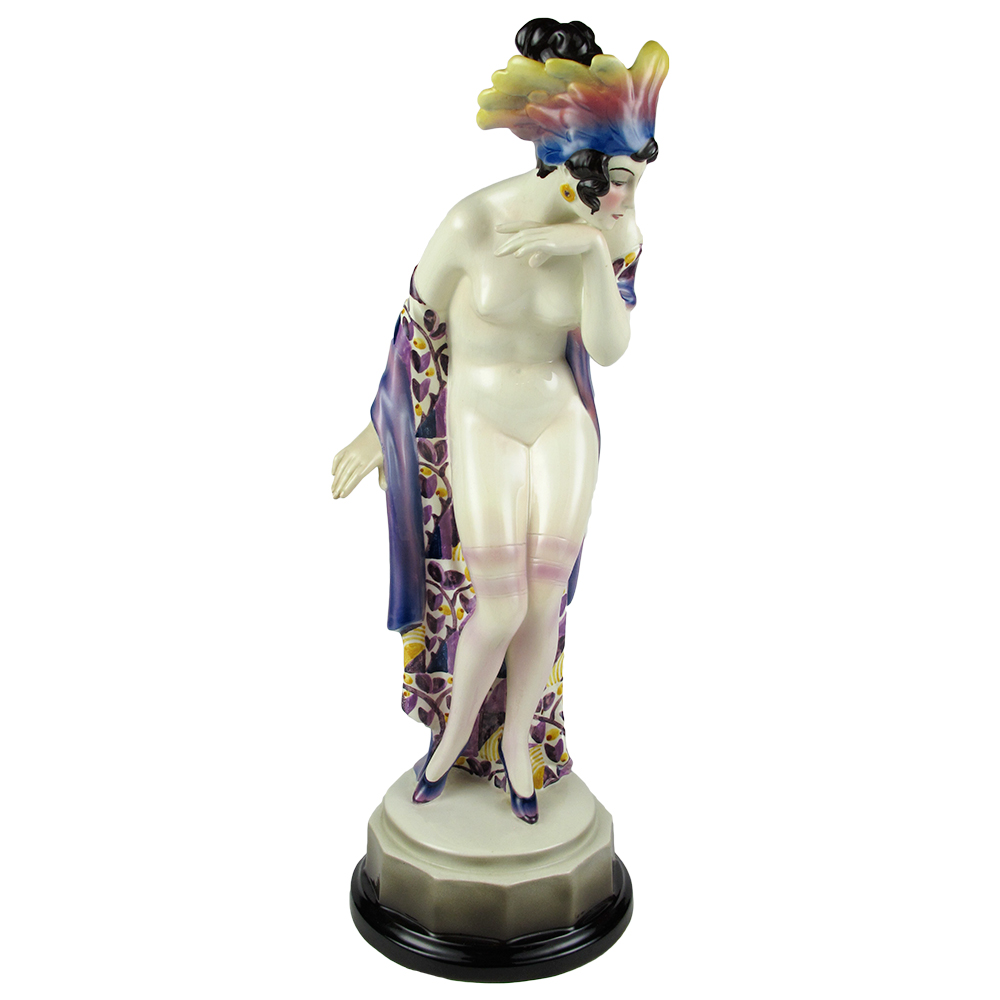
Goldscheider Fascination
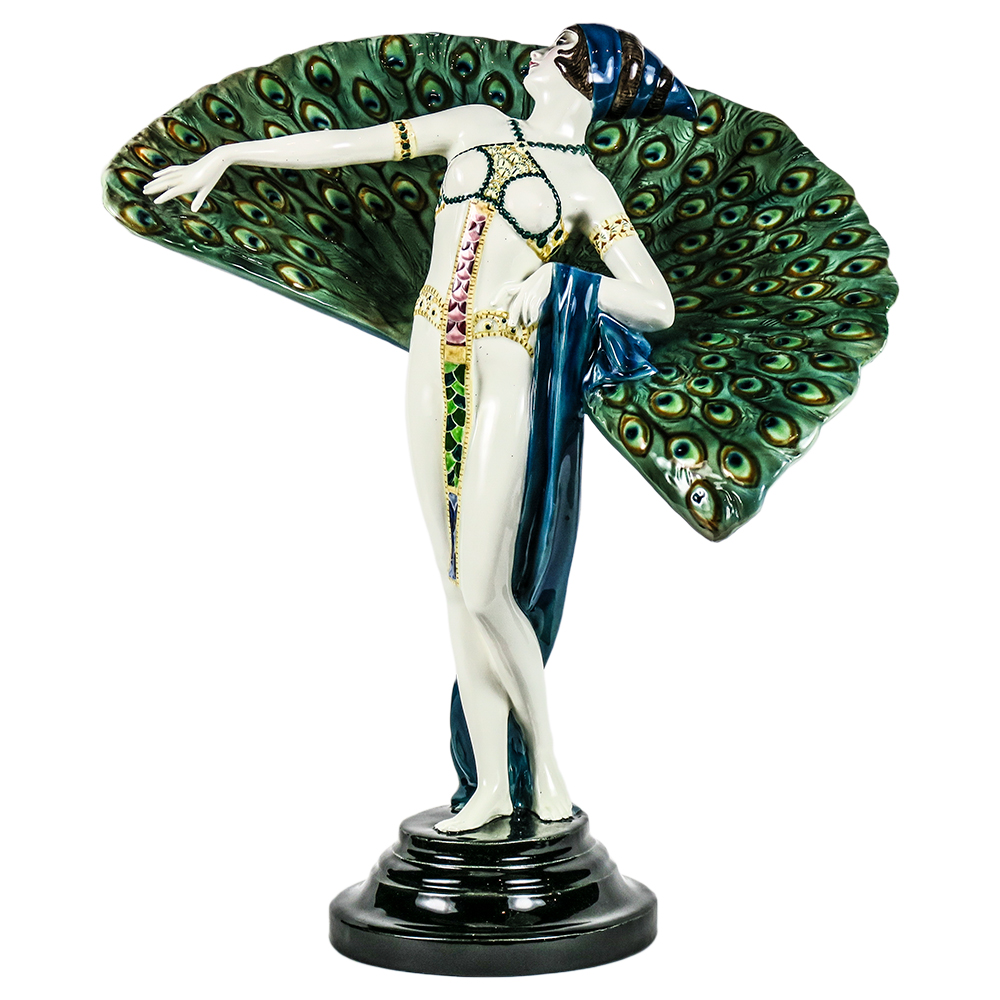
Goldscheider Peacock Dancer
Paris
Paris abounded with café-concerts in the late 19th century, such as the Moulin Rouge and the Folies Bergère, which presented a variety of popular entertainment for nocturnal revelers. In 1892, American dancer Loie Fuller presented her ground-breaking experiments with light, costume and movements as she swirled and twirled on the stage of the Folies Bergère. With large poles, she manipulated voluminous lengths of silk fabric which was illuminated by cascades of colored light projections. Henri de Toulouse-Lautrec watched her dance and captured the proto-cinematic effect of shimmering light and color in a series of lithographs in 1893. Toulouse-Lautrec was also stimulated by the counterculture of the Montmartre cabarets, epitomized by the Chat Noir frequented by the young Pablo Picasso. Picasso went on to inspire cabaret performances with his early Cubist collages derived from primitive African masks. In 1925, the African-American dancer, Josephine Baker, began performing her erotic banana dance at the Folies Bergère and became the toast of Paris. Her Revue Negre epitomized colonial fascination with exotic non-Western cultures in the Jazz age.
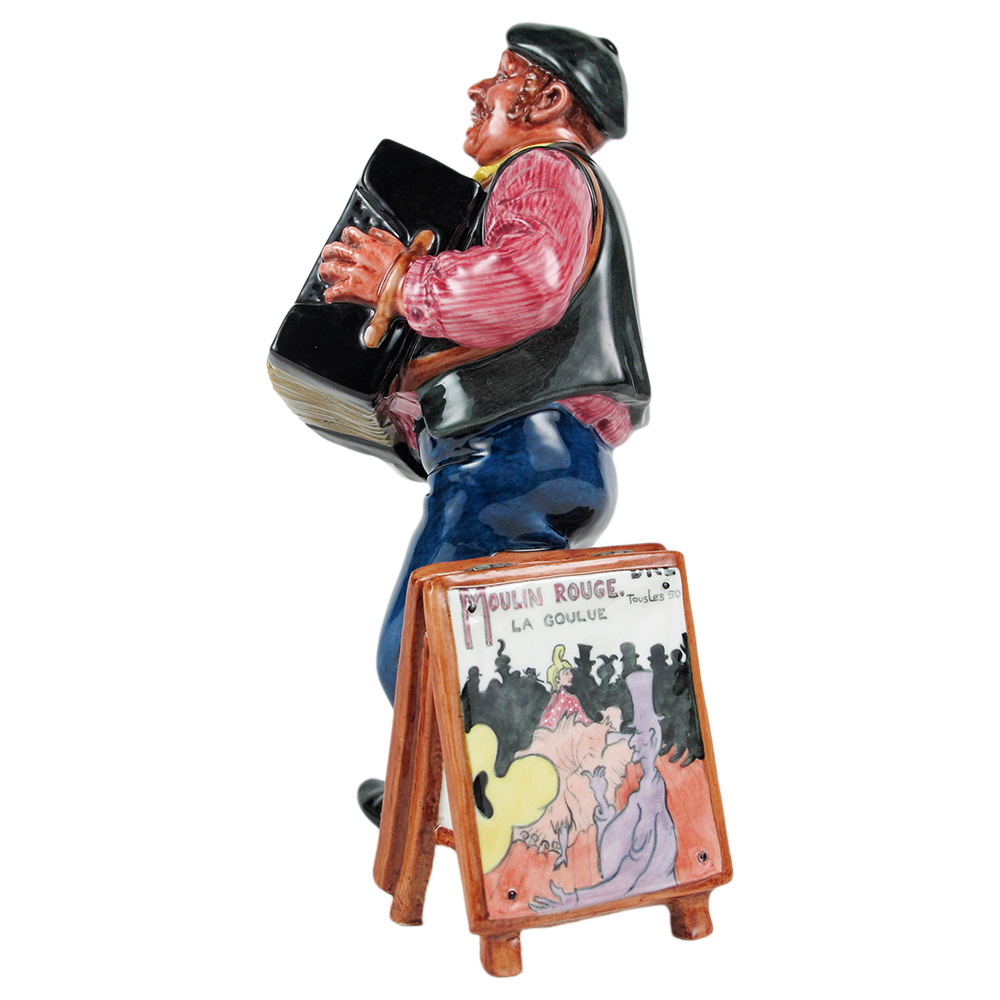
Royal Doulton Prototype Moulin Rouge
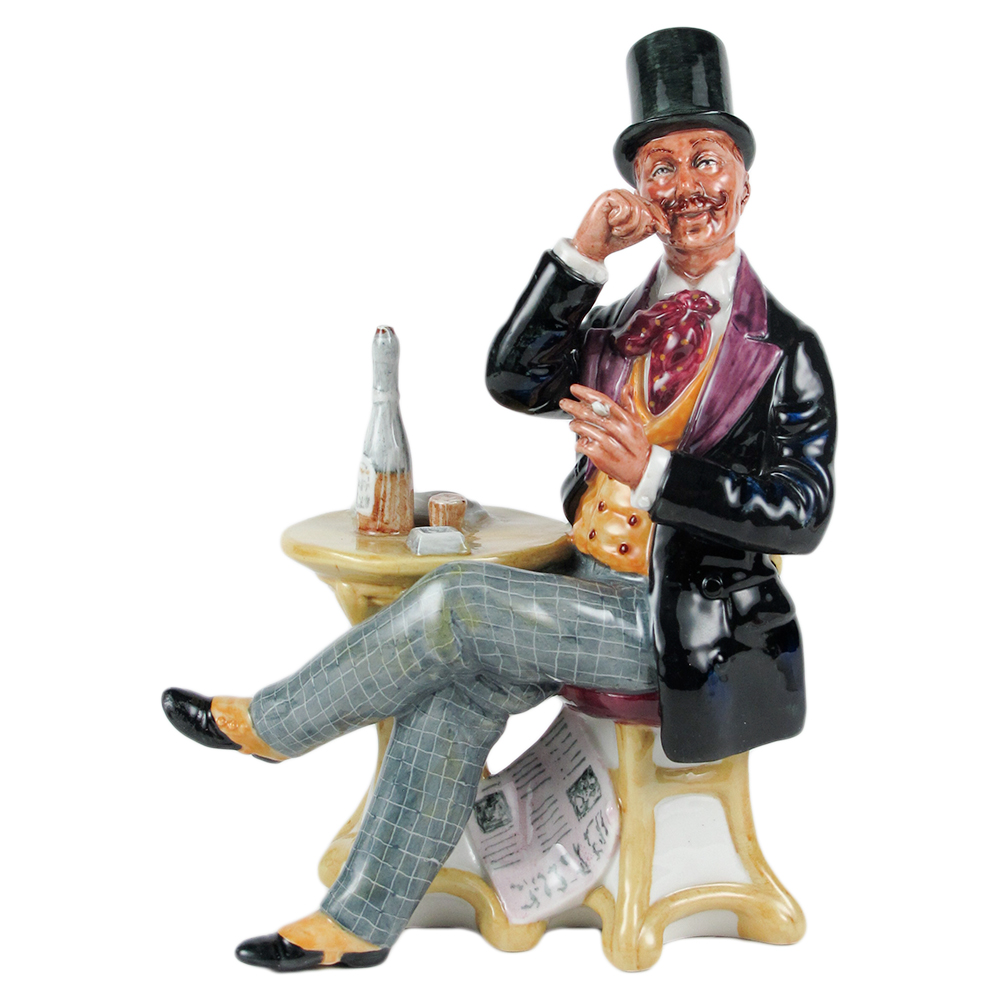
Royal Doulton Prototype Boulevardier
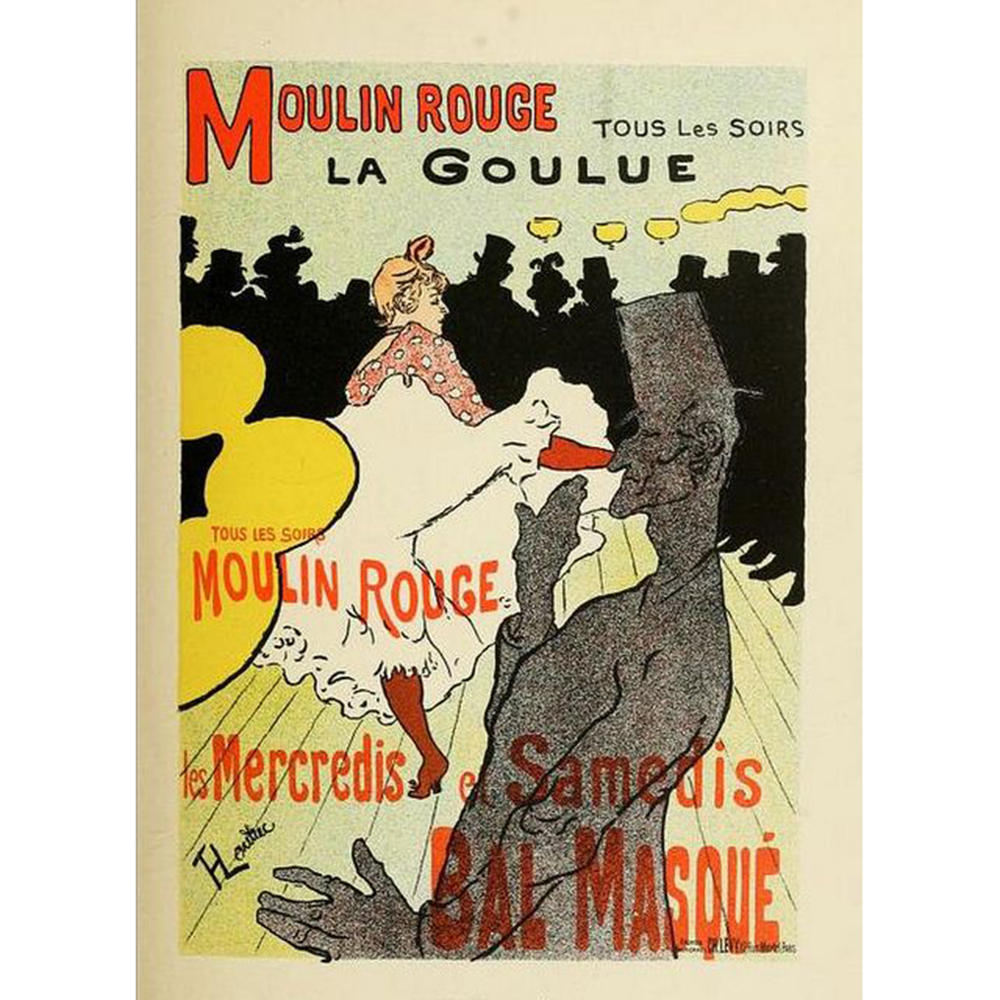
Moulin Rouge Poster
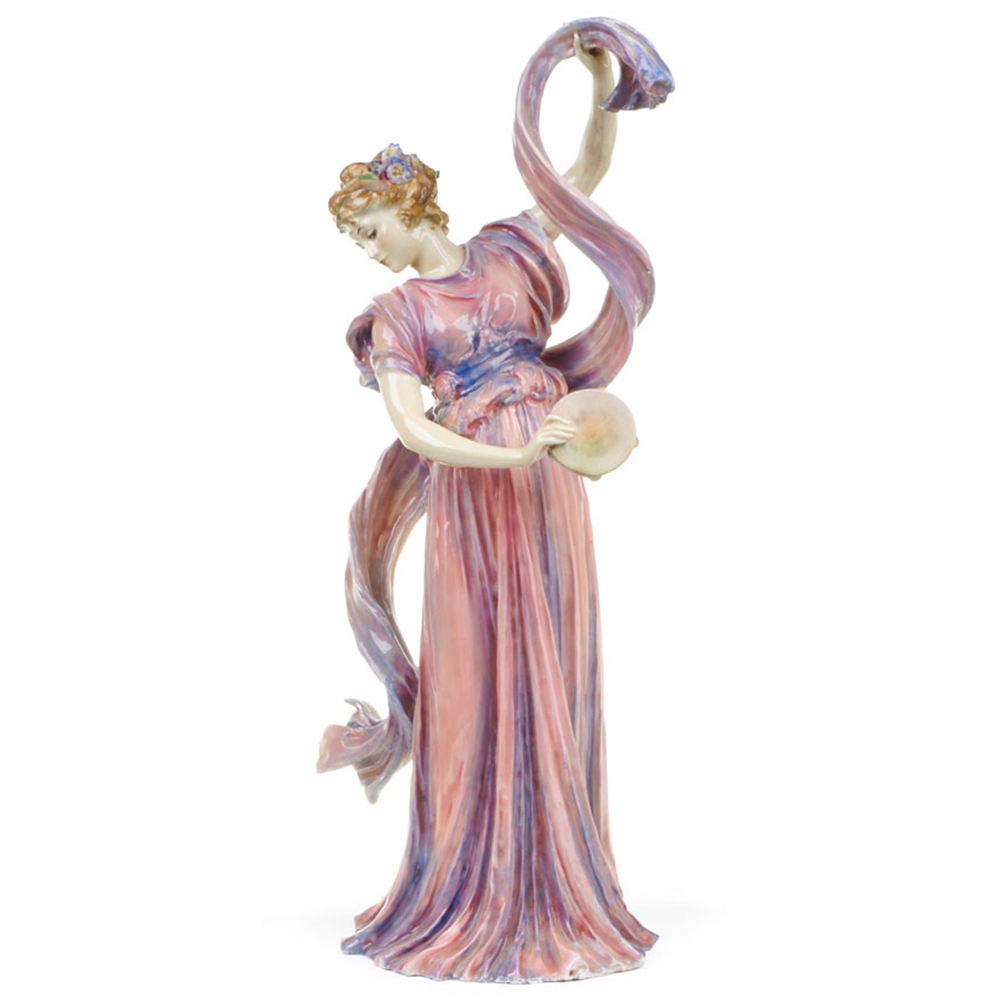
Royal Doulton Loie Dancing
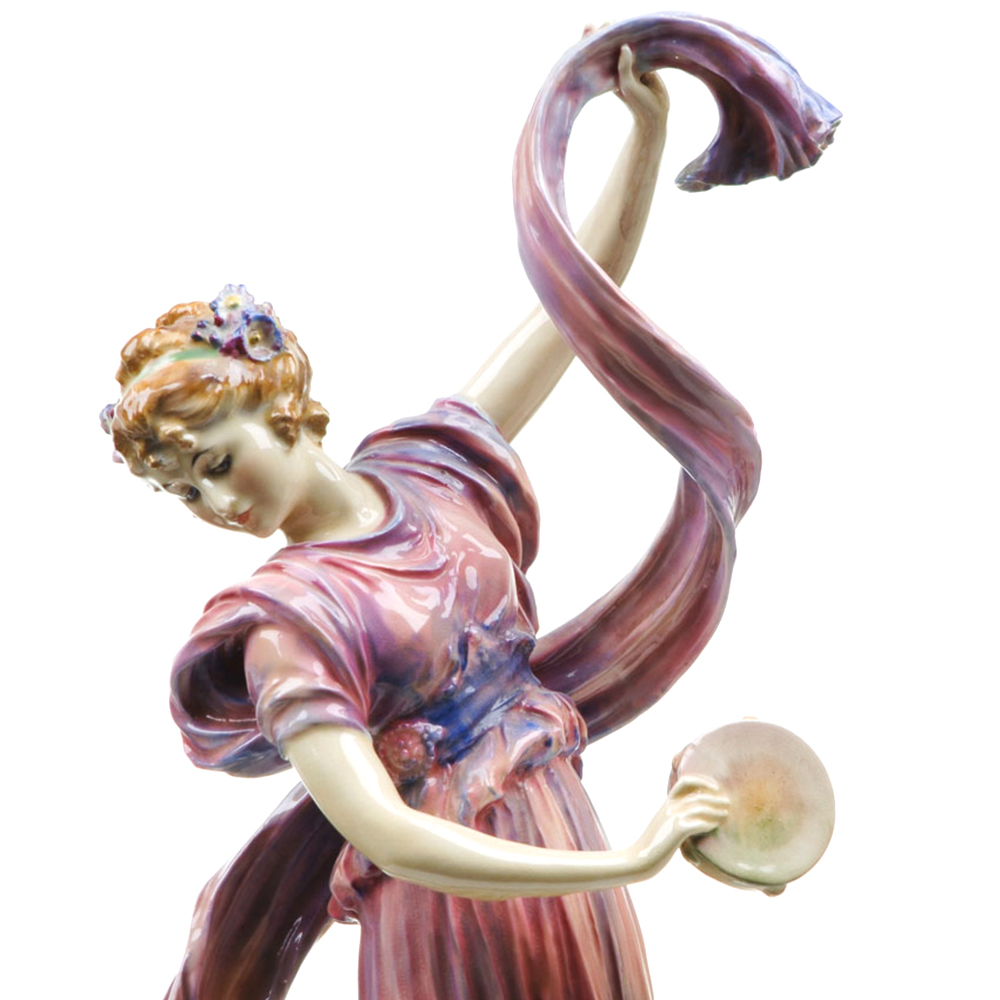
Loie Dancing Detail
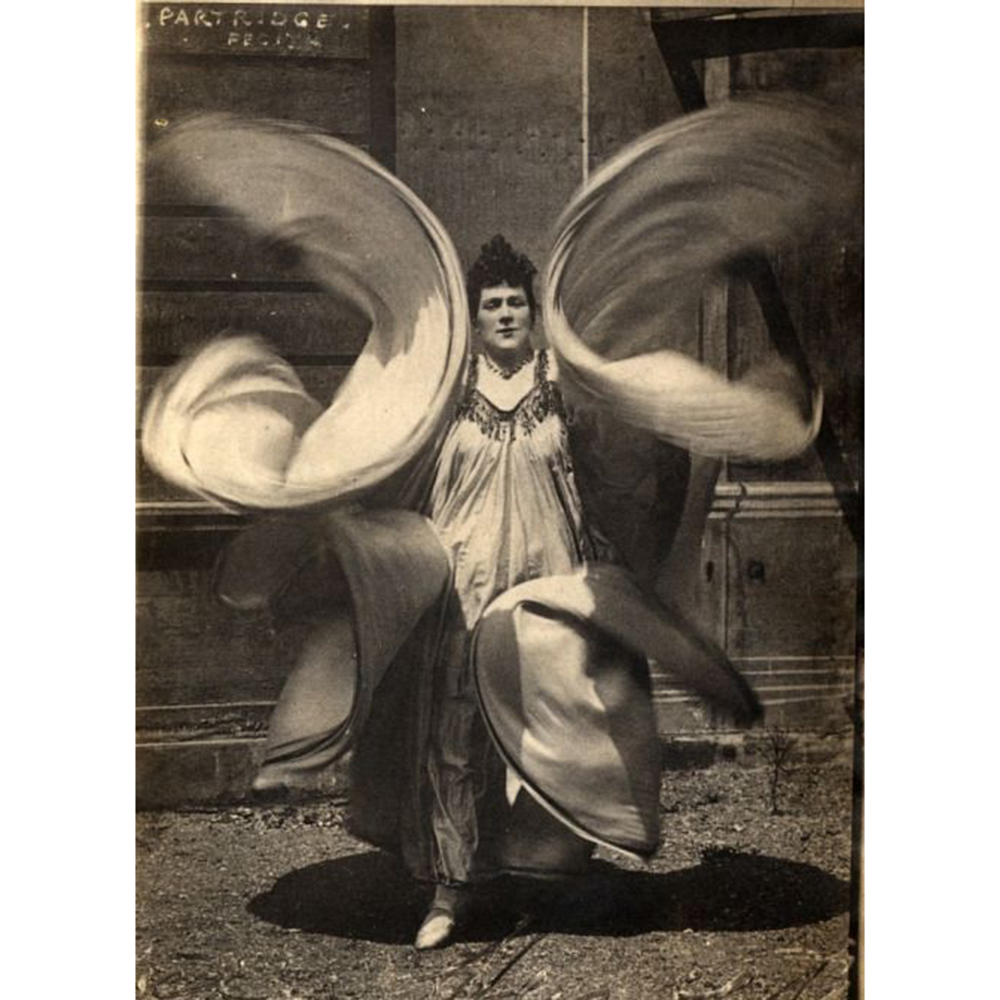
Loie Fuller
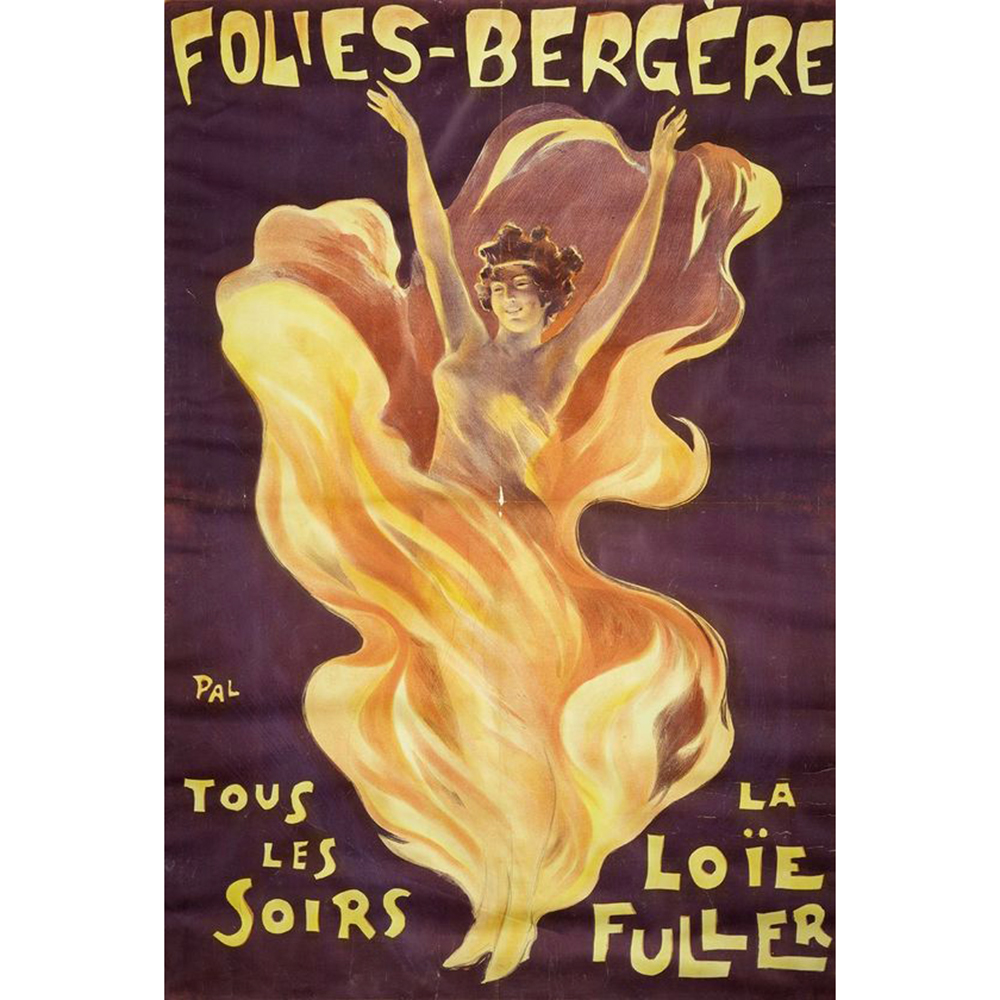
Folies Bergere Loie Fuller Poster
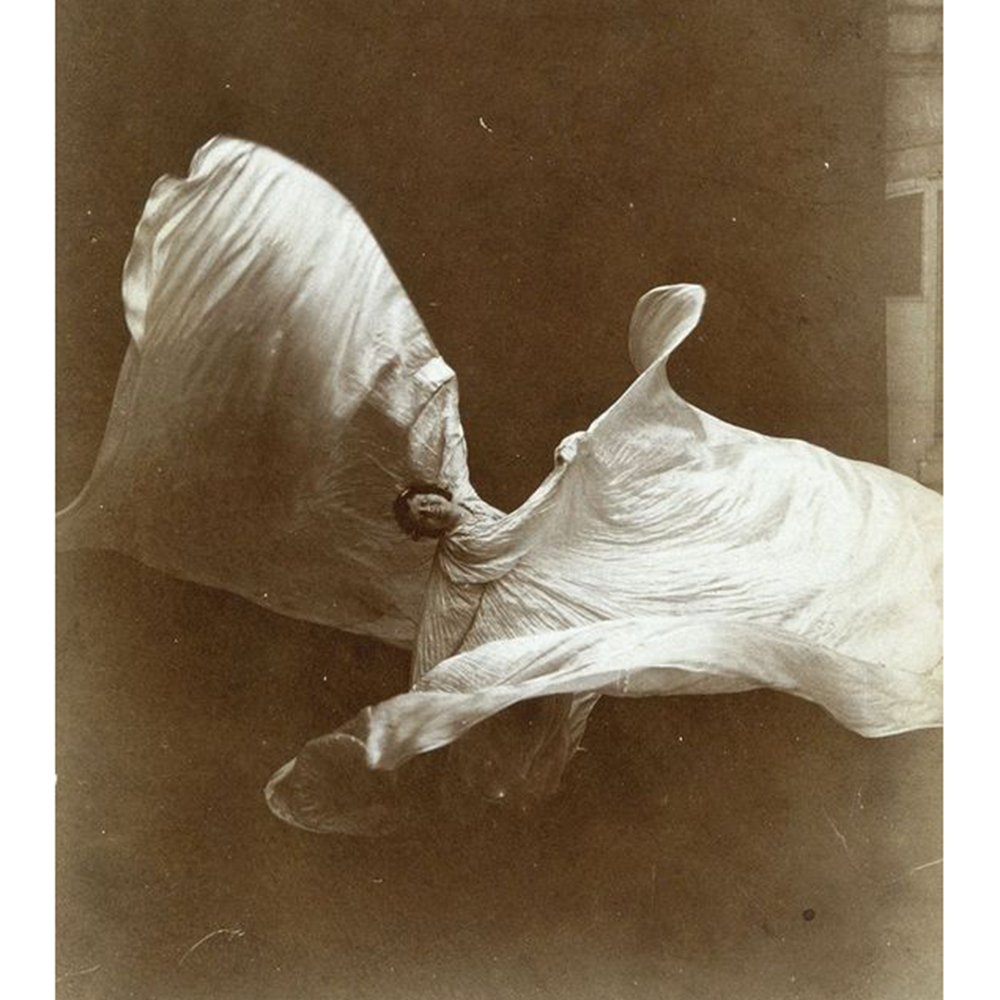
Loie Fuller
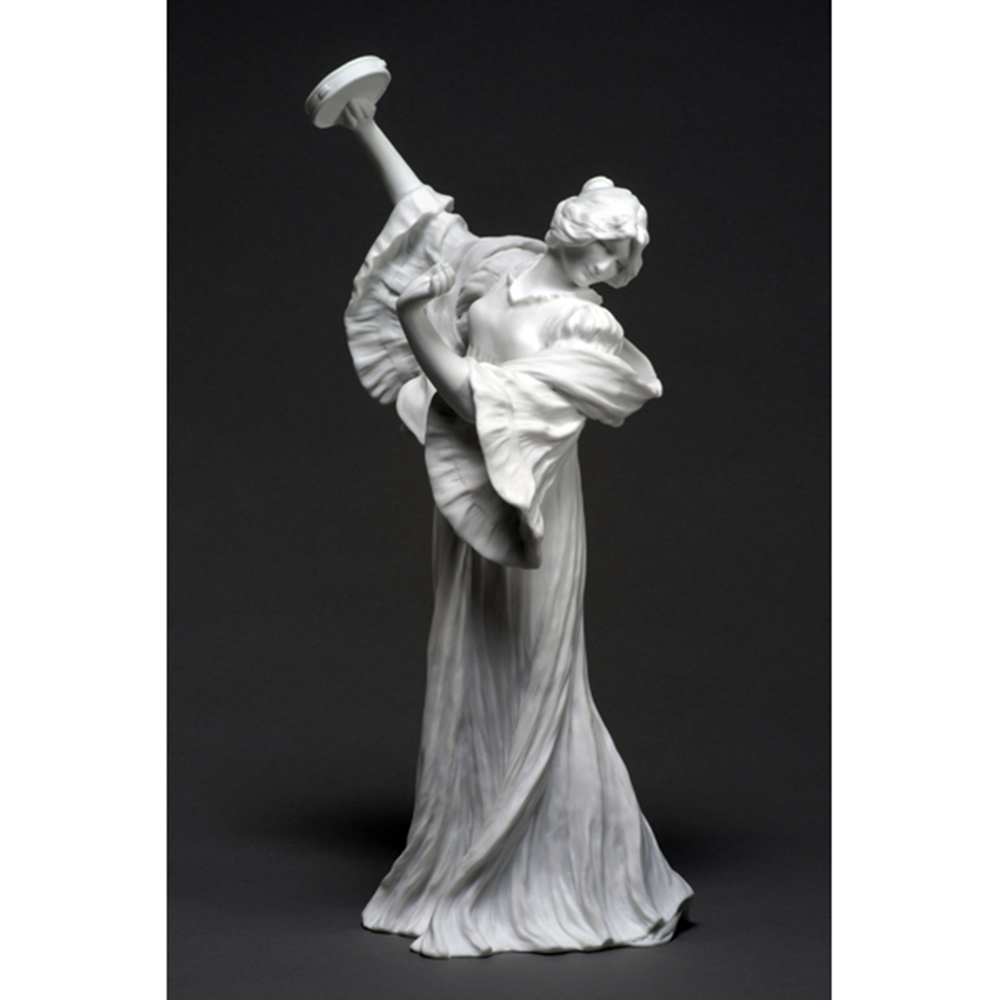
Sèvres Porcelain Loie Fuller Dancing
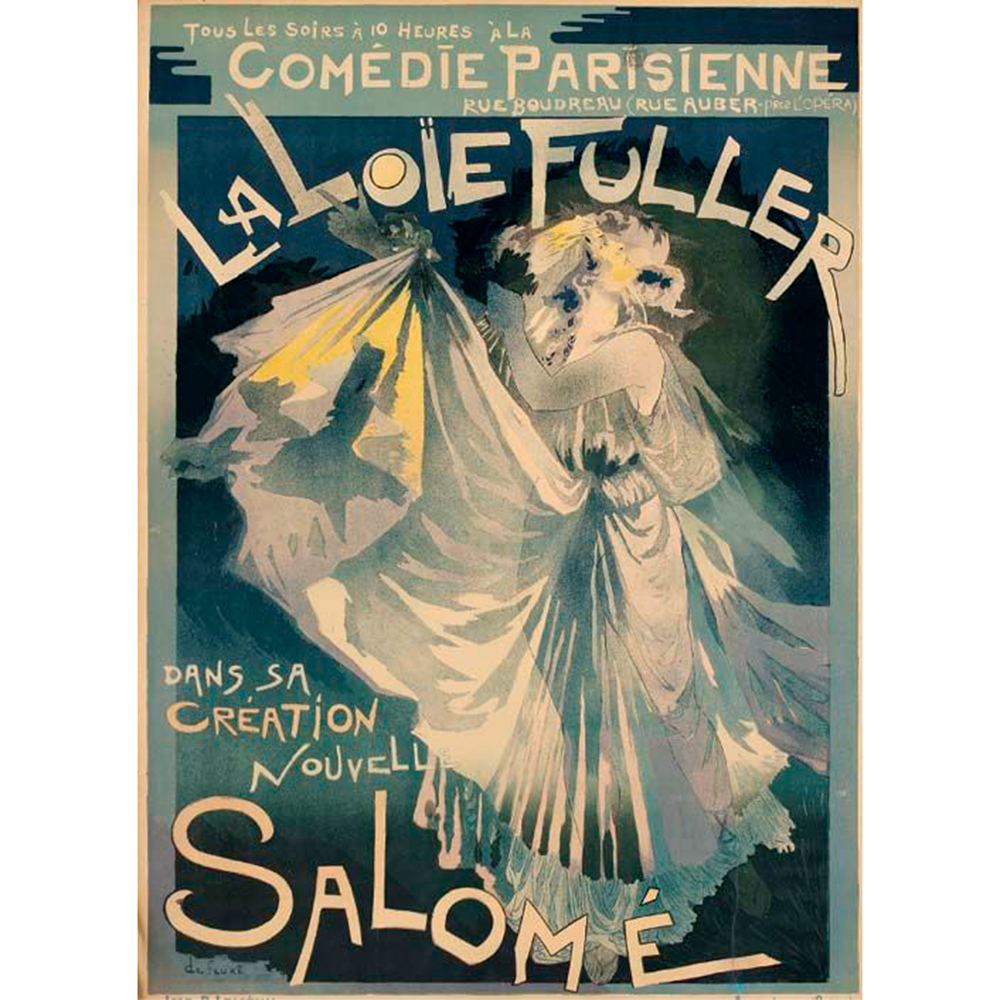
Loie Fuller Salome Poster
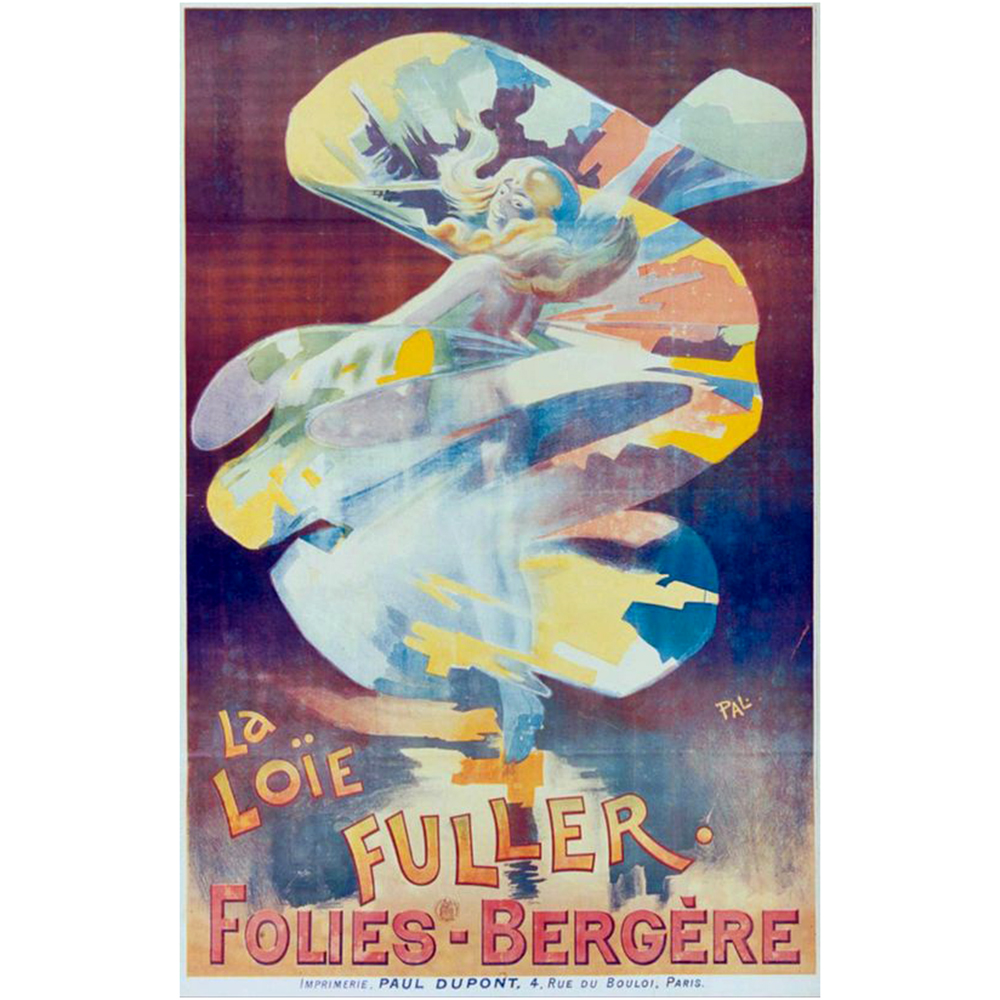
Loie Fuller Poster
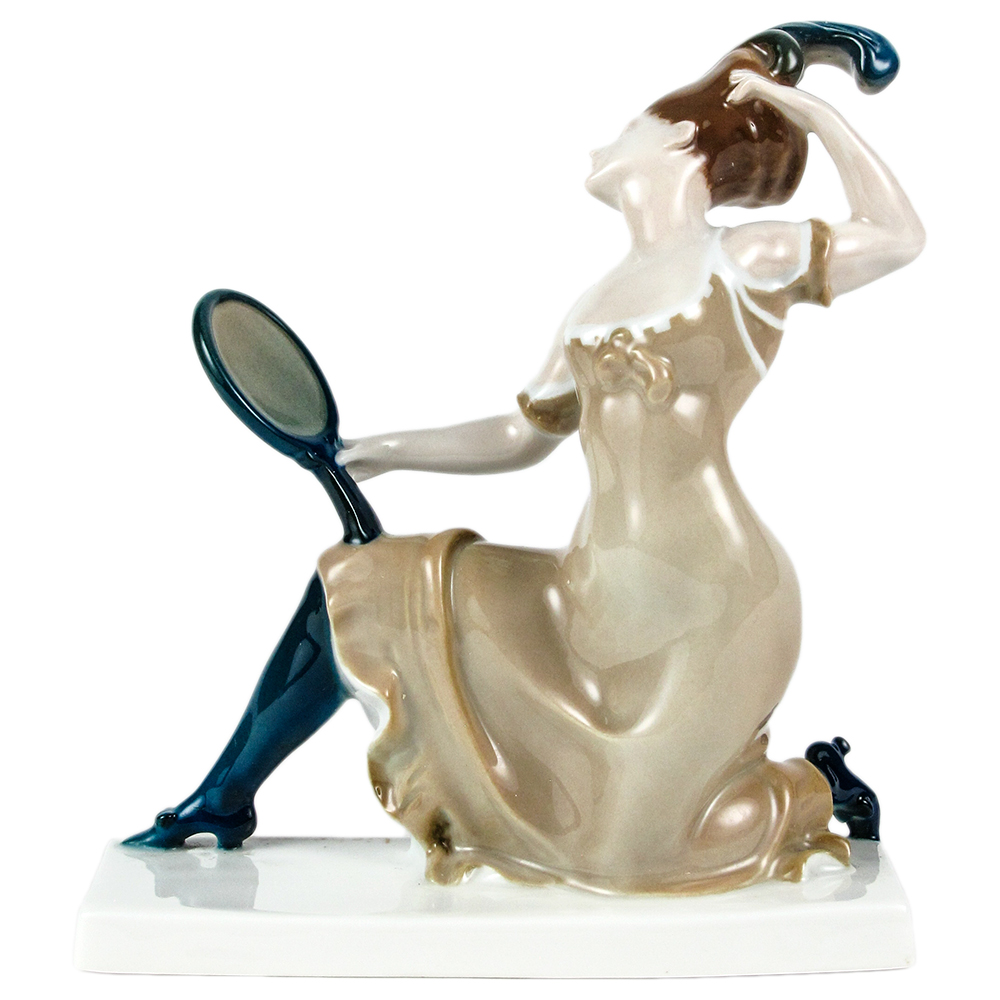
Rosenthal Moulin Rouge Star
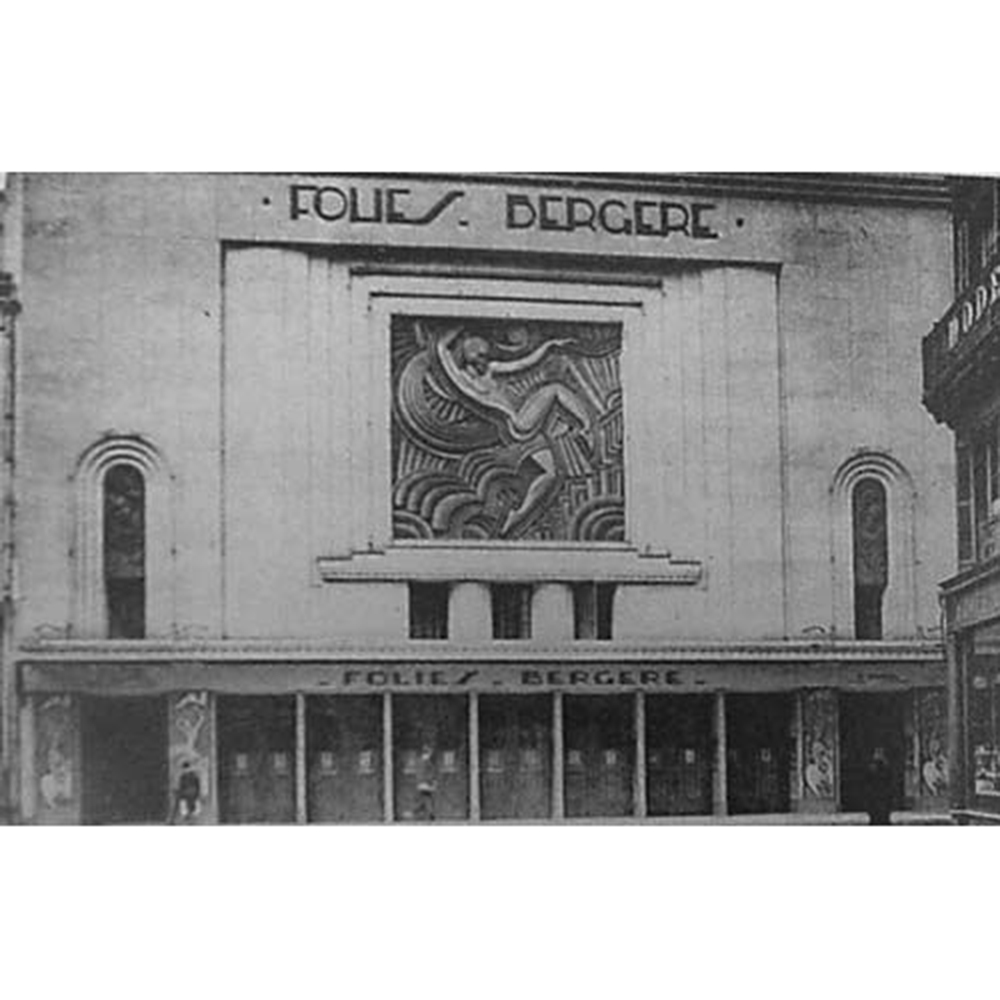
Folies Bergere 1928
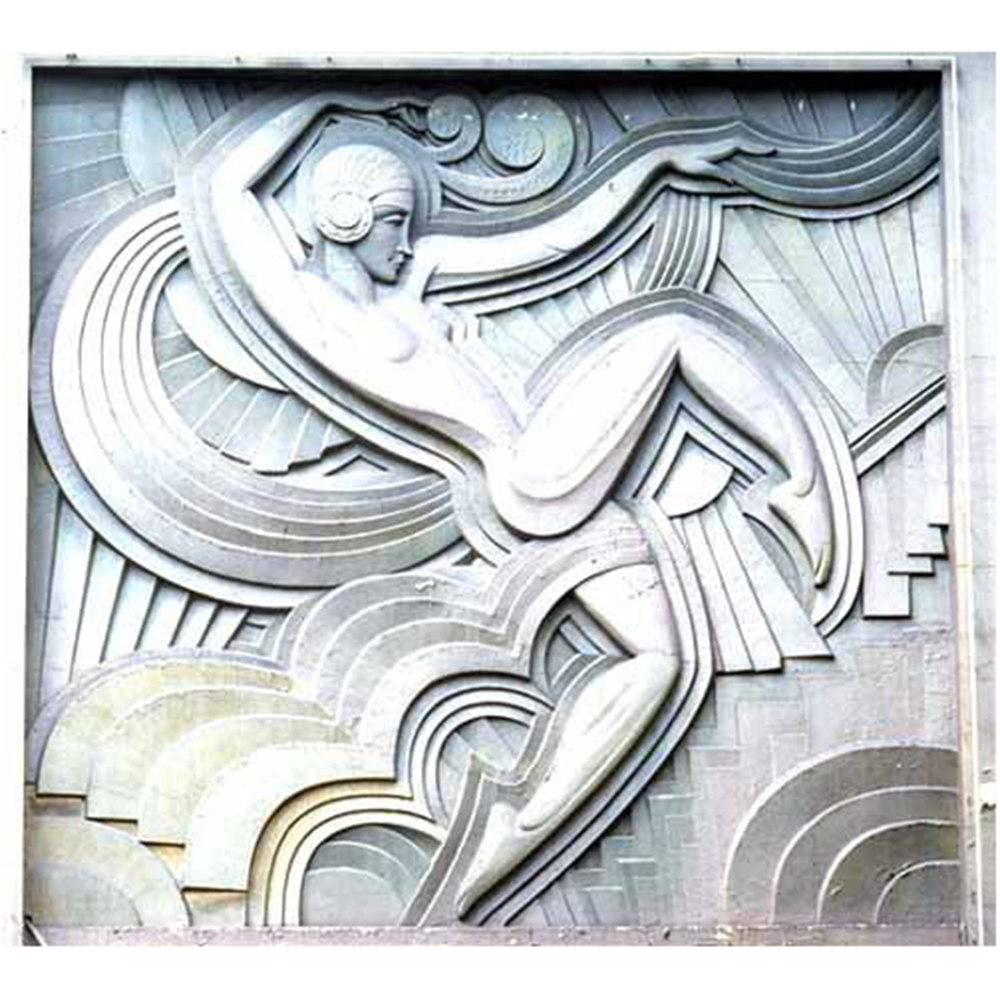
Folies Bergere Detail
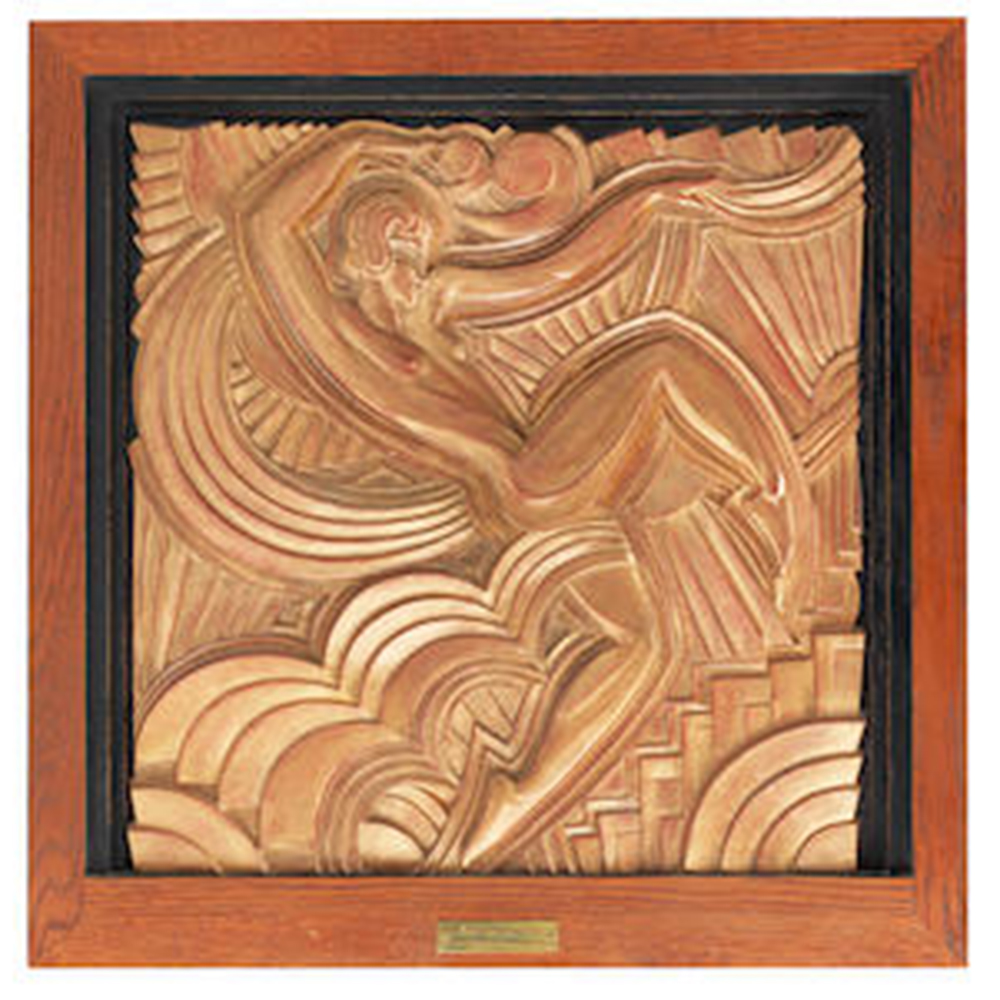
Folies Bergere by Picaud
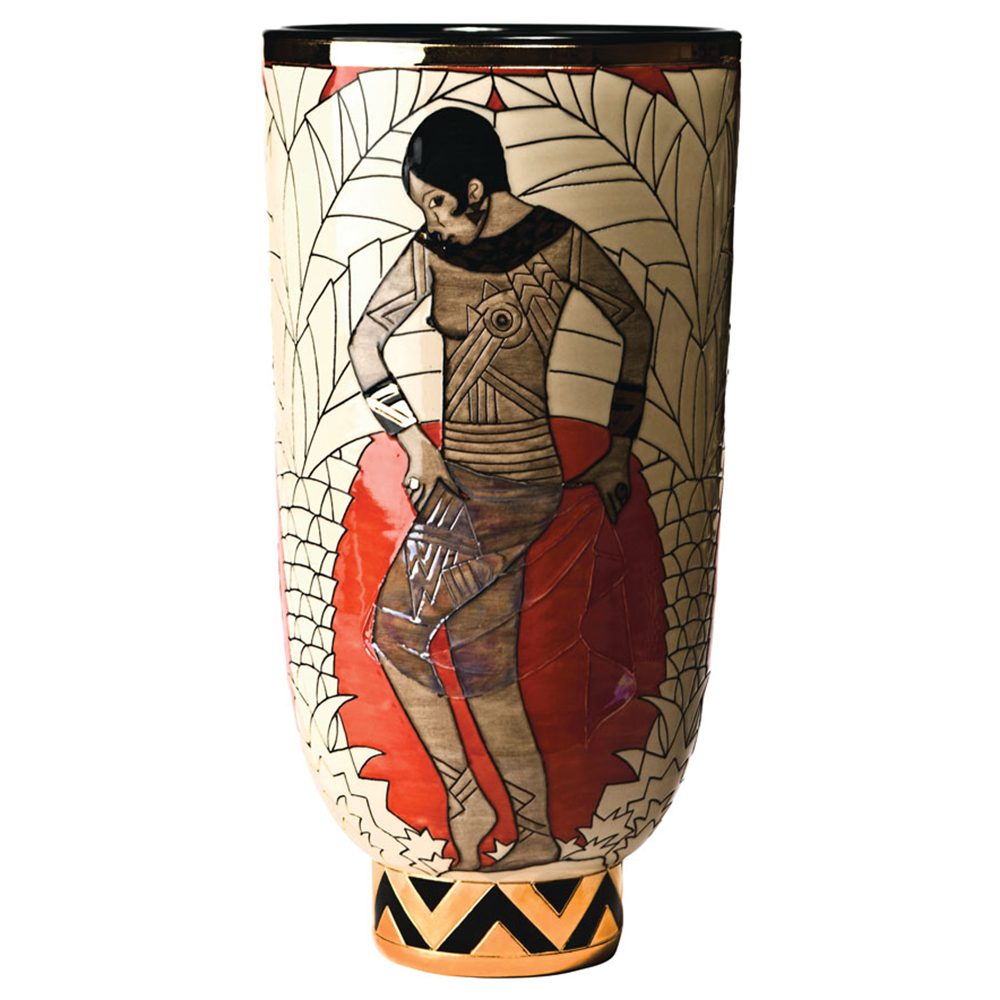
Dennis Chinaworks Josephine Baker Vase by S. Tuffin
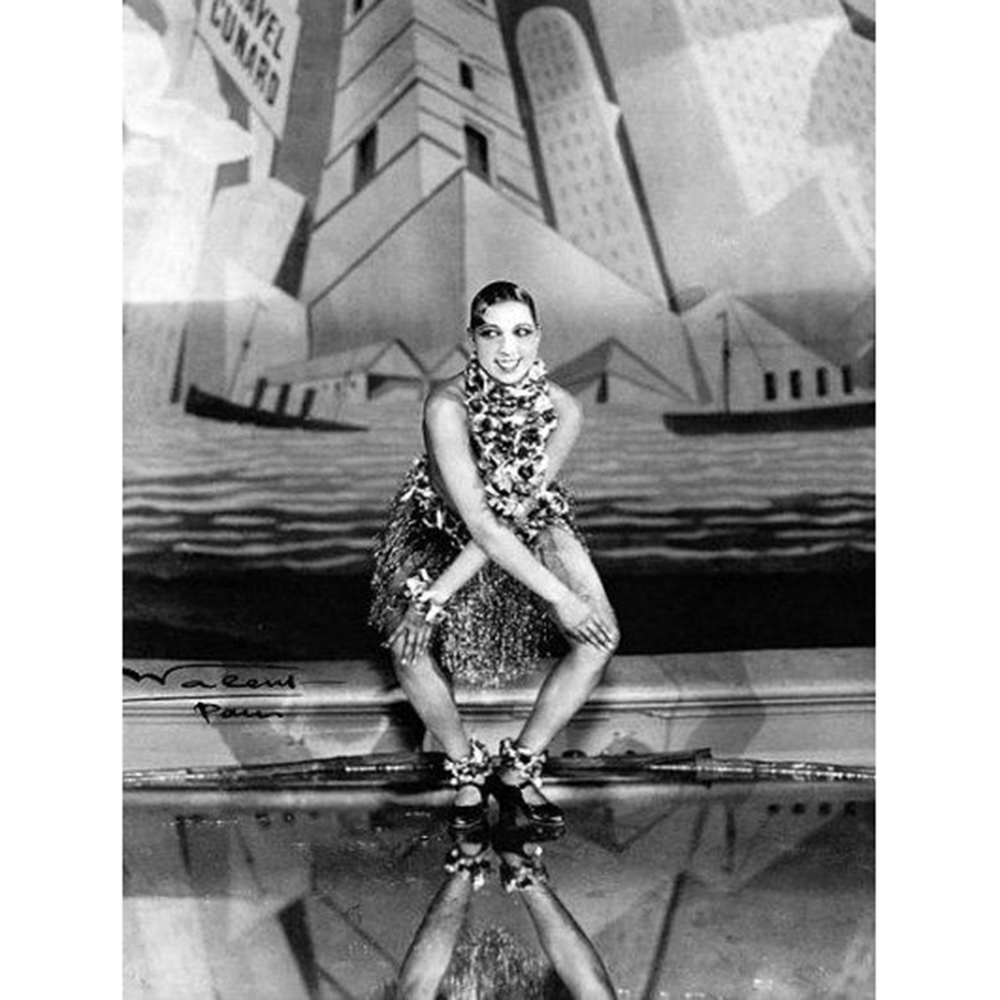
Josephine Baker
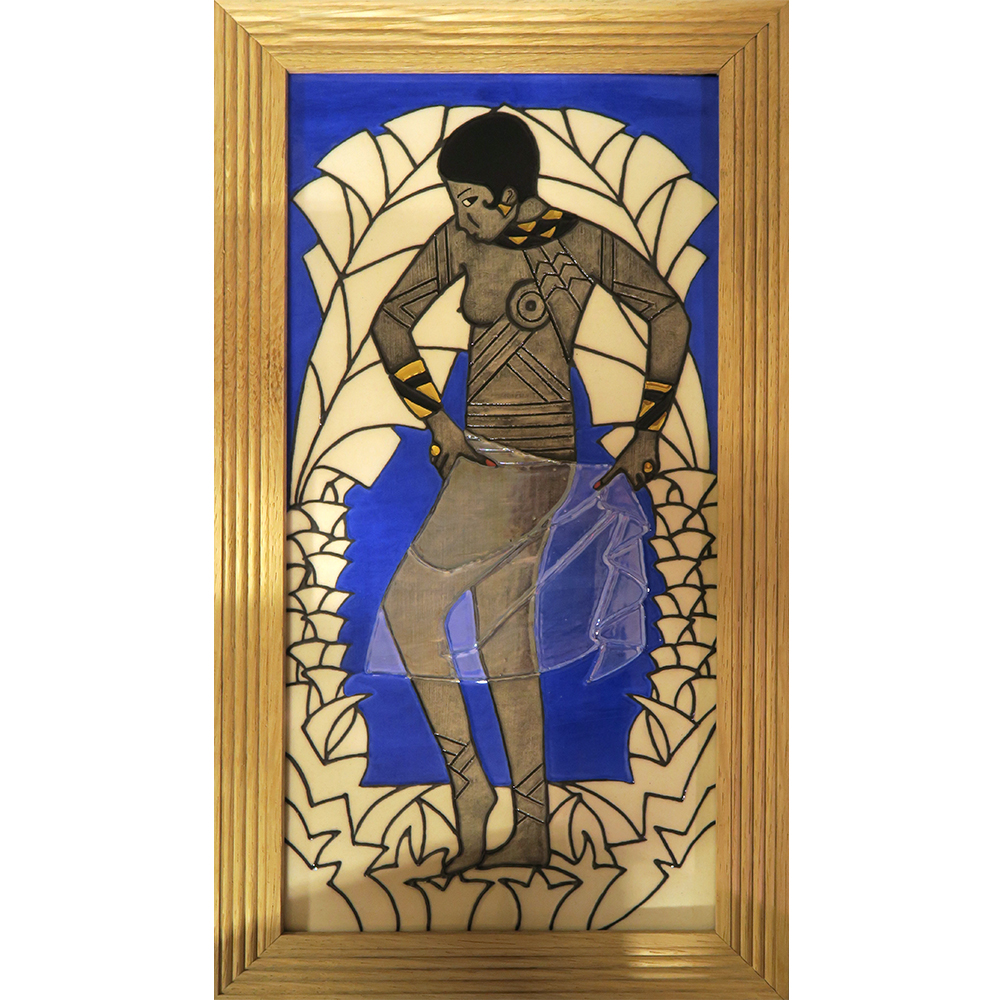
Dennis Chinaworks Josephine Baker Tile by S. Tuffin
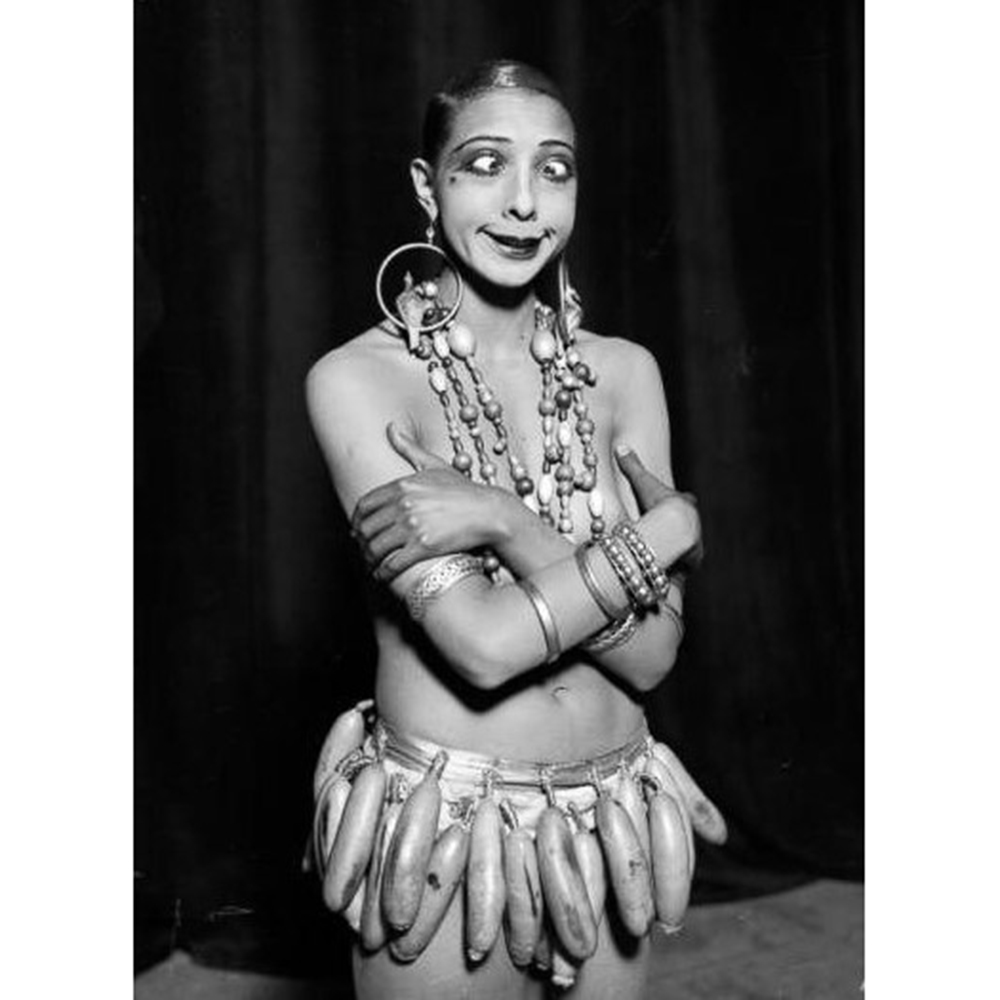
Josephine Baker
Vienna
The Wiener Werkstatte (Vienna Workshop) synthesized architecture, poetry, music and dance at the Cabaret Fledermaus in central Vienna. In 1907, they created a theatrical space for the performing arts in a basement, lined from floor to ceiling with a mosaic of over 7,000 tiles in primary colors. The patchwork grid, designed by the Wiener Keramik workshop, was interspersed with scenes of folklore, putti, birds and floral motifs as well as caricatured portraits of the artists who performed at the cabaret. The Wiesenthal sisters fused expressive movements with waltz rhythms into a unique form of unconventional dance. One of their students, Lucy Kieselhausen, wrote a seductive dance drama of Salammbo which sensationalized veil dancing and snake dancing on the stage. The sassy young dancer and singer Elsie Altmann was said to dance with her eyes and mouth and was photographed in typical cabaret costume with top hat by top Viennese photographer Franz Xaver Setzer. She was also one of the glamorous stars captured through the lens of the pioneering photographer Dora Kallmus at her Atelier d’Ora with studios in Vienna, Carlsbad and Paris. Postcards of the mesmerizing photos of cabaret stars inspired many porcelain figures by Goldscheider.
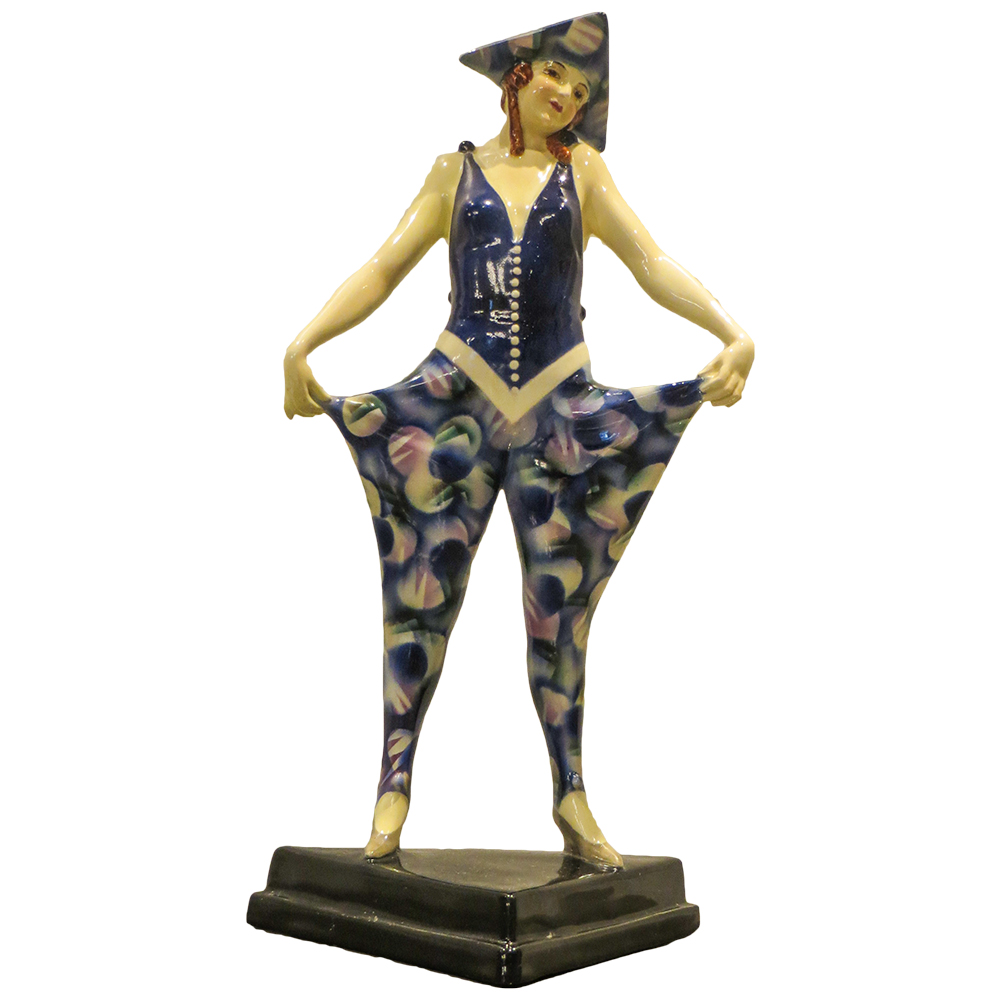
Goldscheider Cabaret
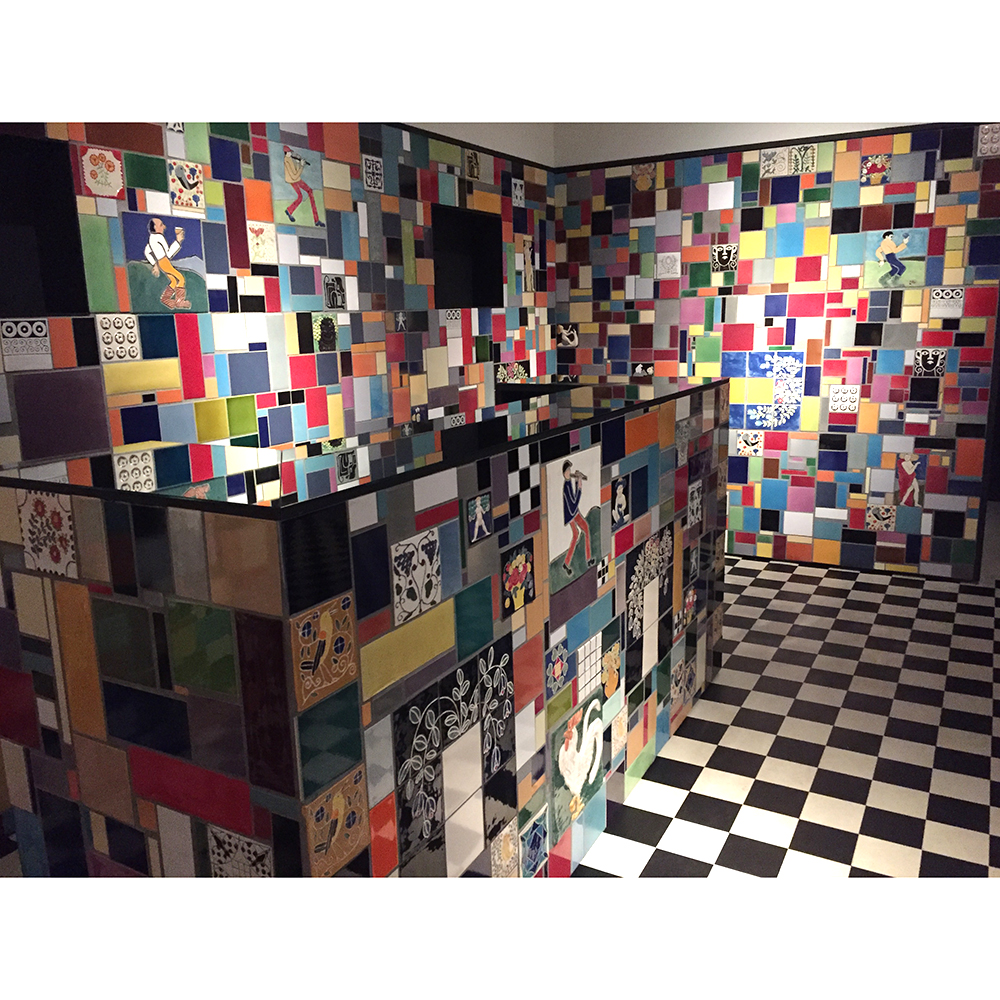
Recreation of the Cafe Fledermaus
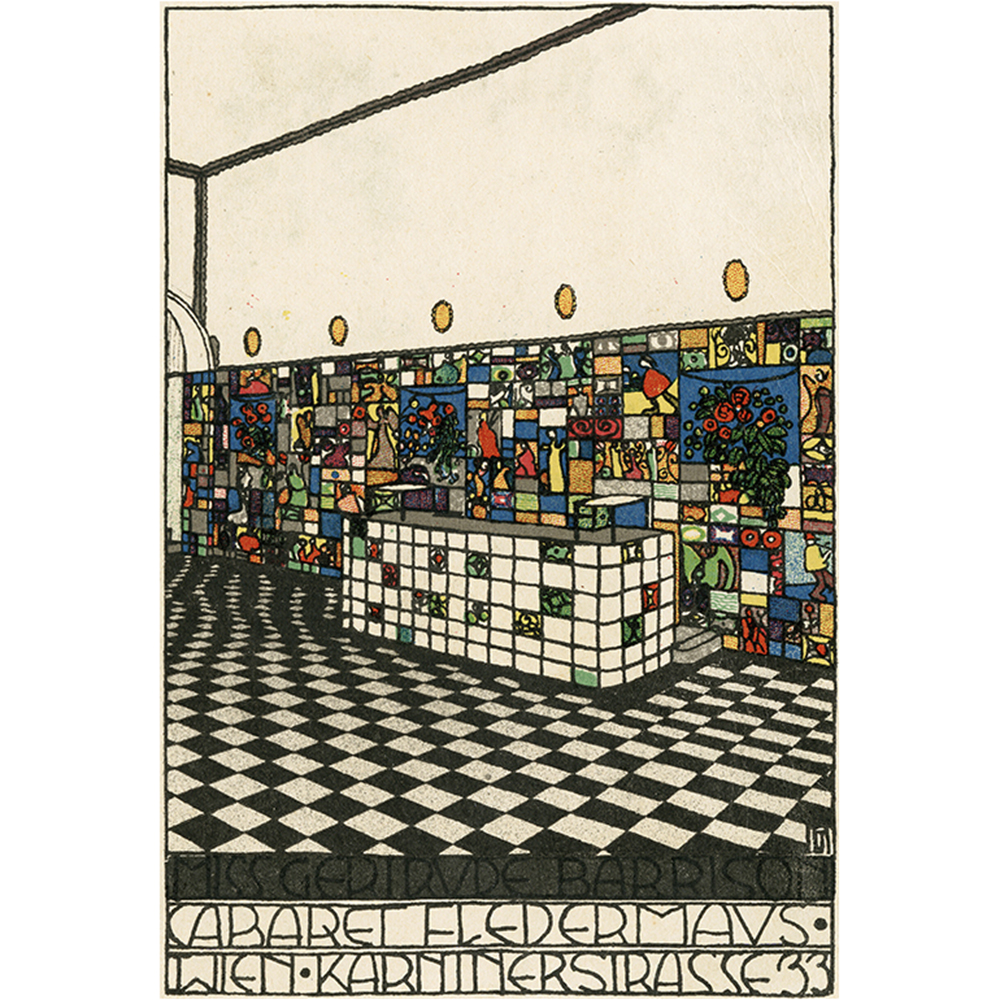
Cabaret Fledermaus Bar Poster
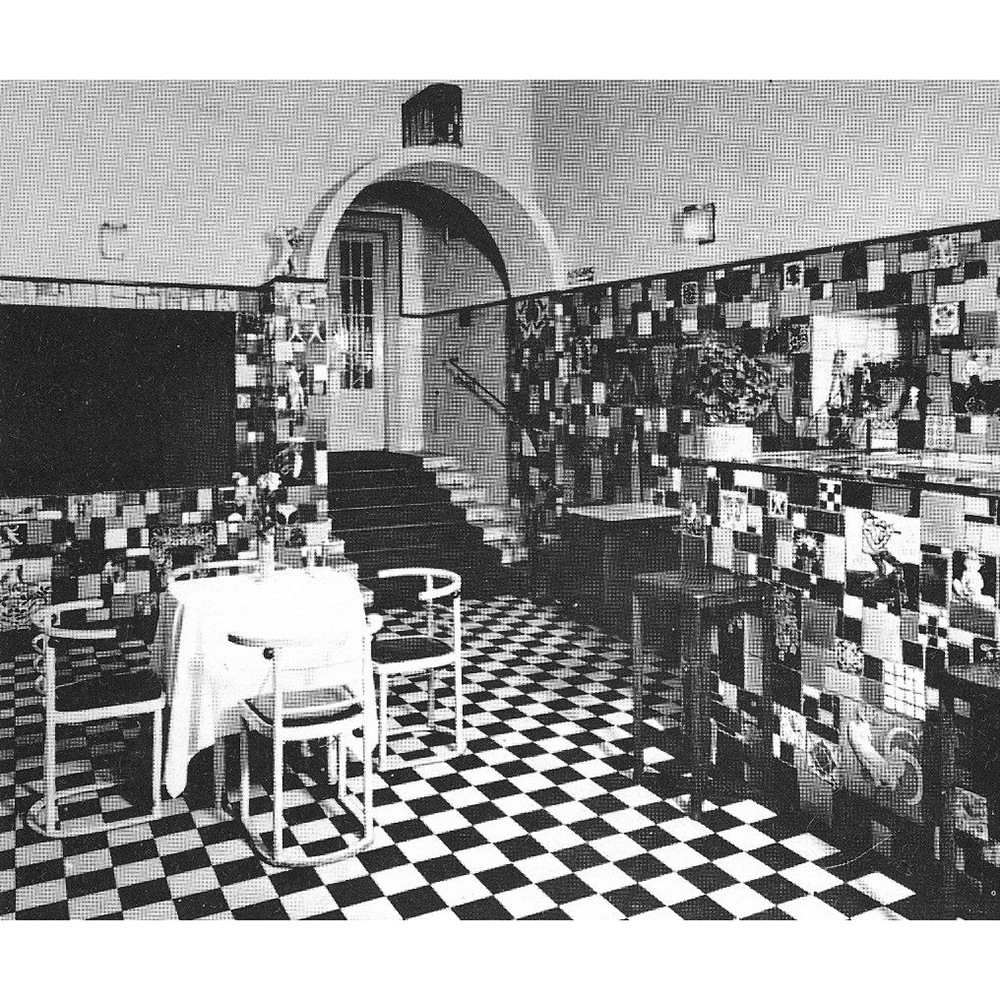
Cabaret Fledermaus
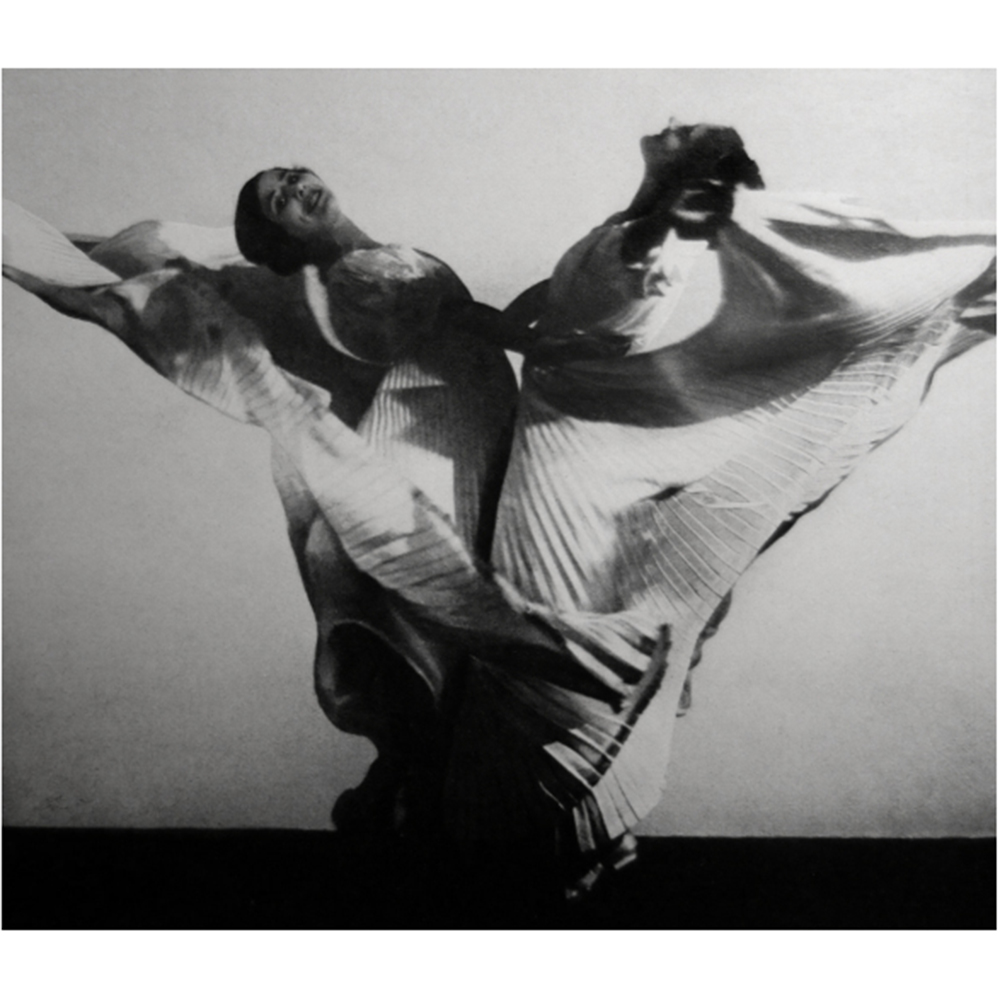
Wiesenthal Sisters
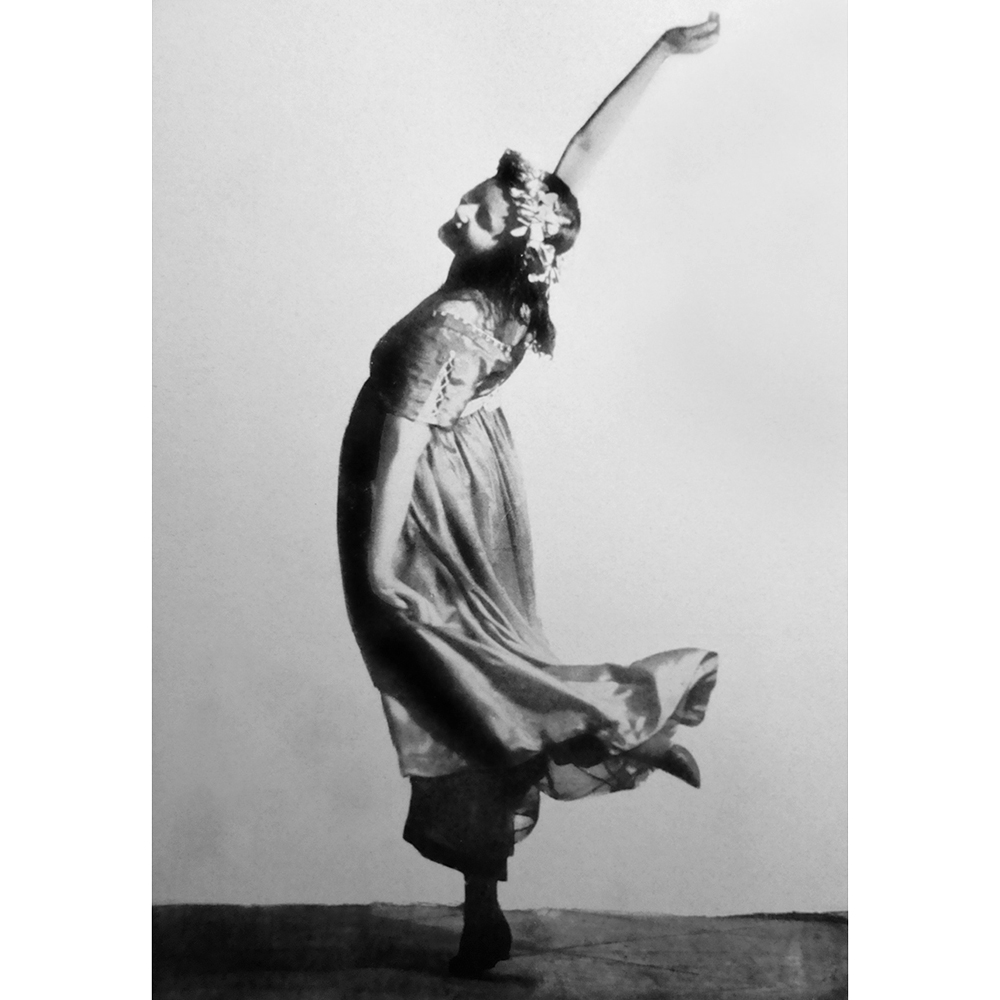
Grete Wiesenthal
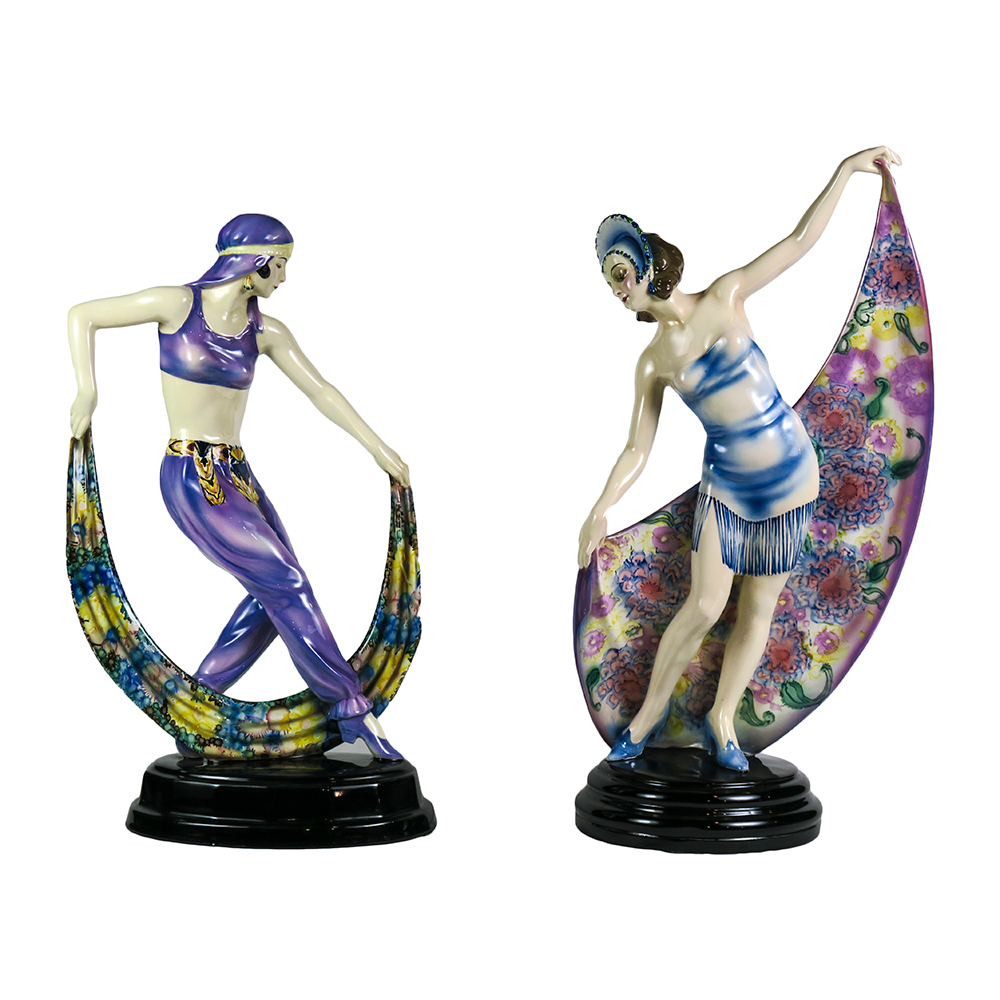
Goldscheider Dancers
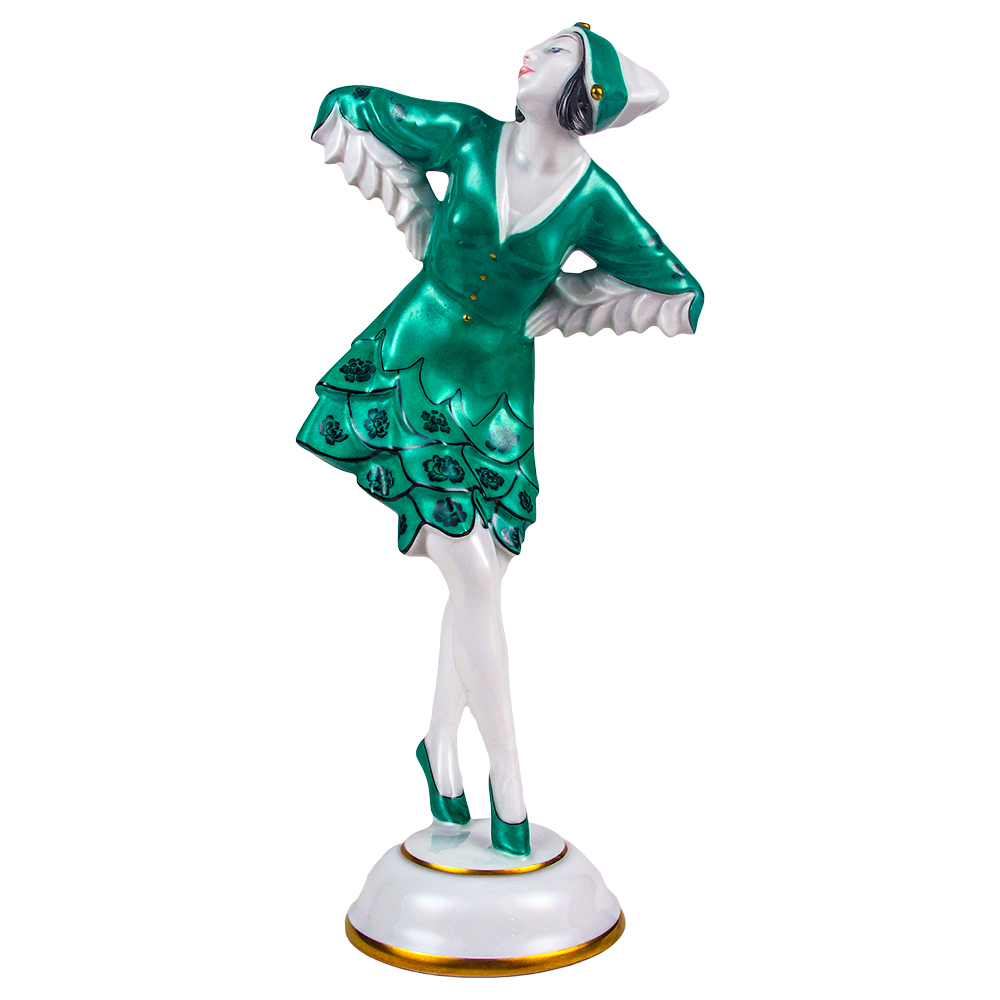
Hutschenreuther Lucy Kieselhausen
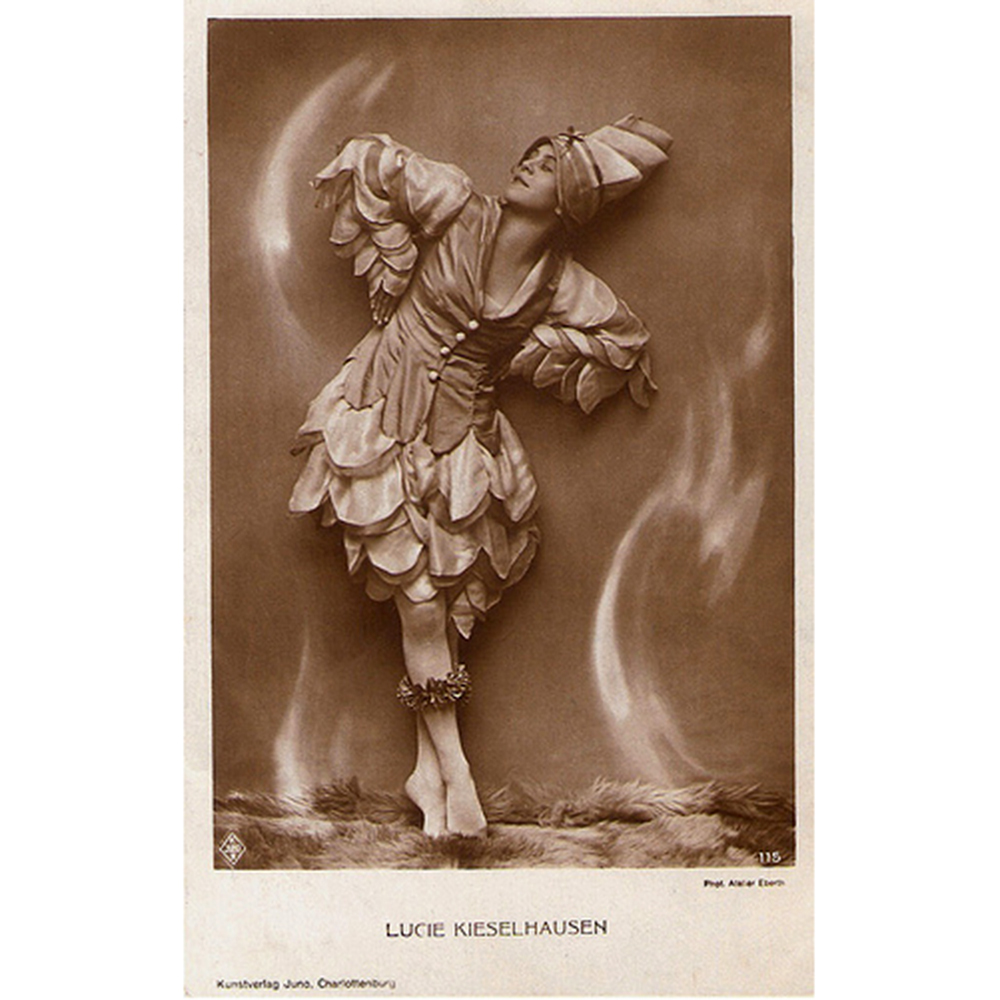
Lucy Kieselhausen
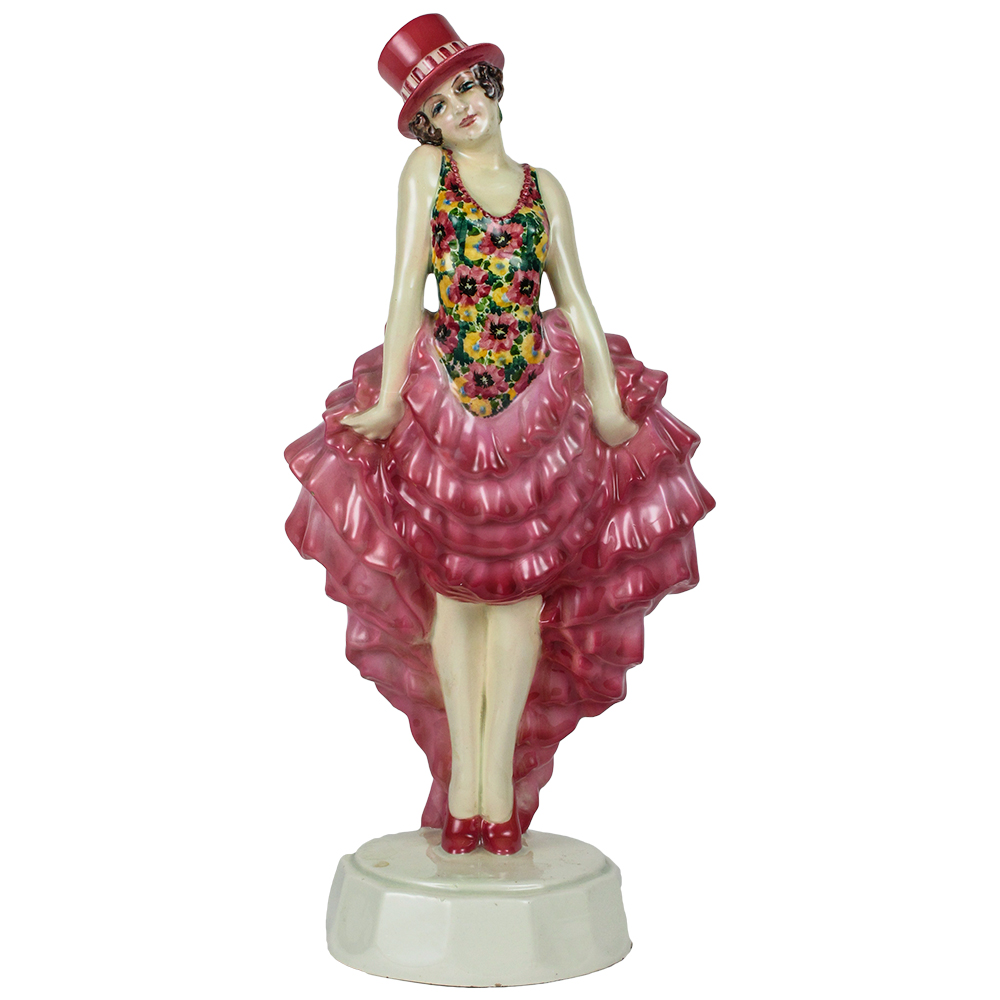
Goldscheider Cabaret - Elsie Altmann
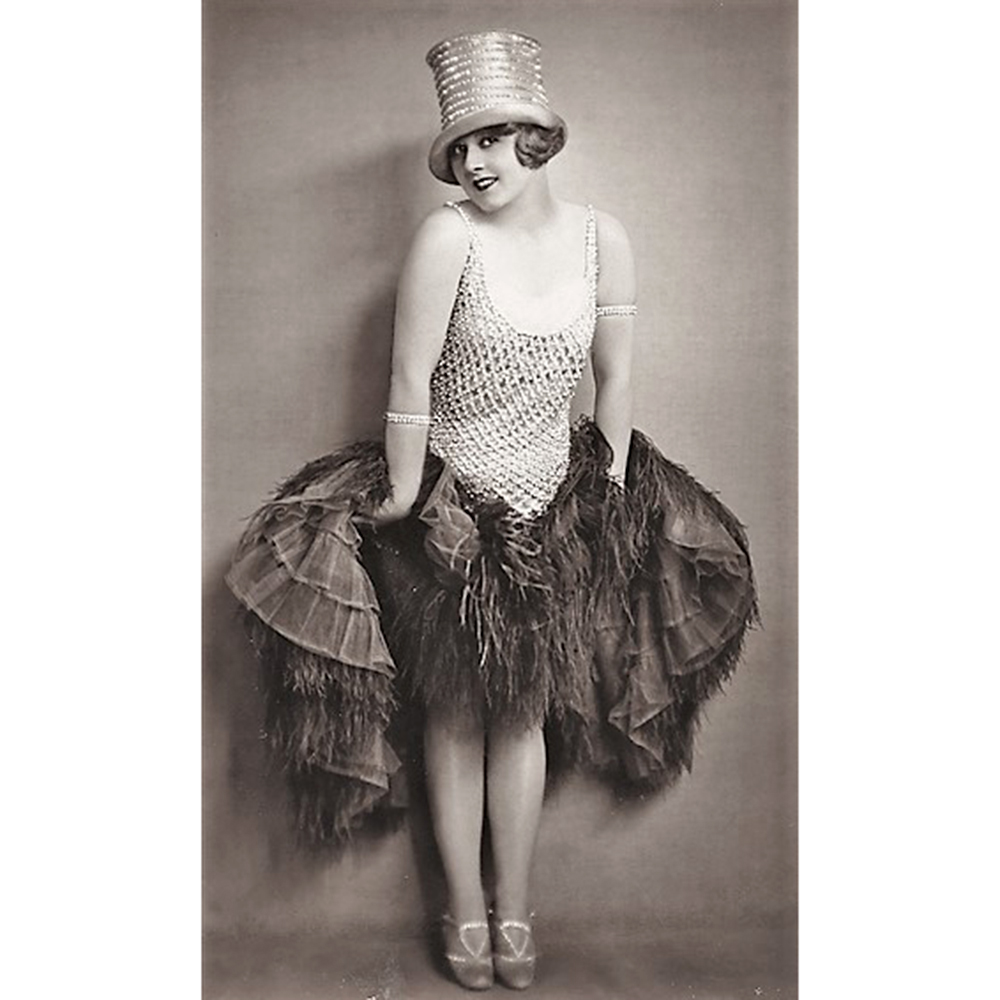
Elsie Altmann
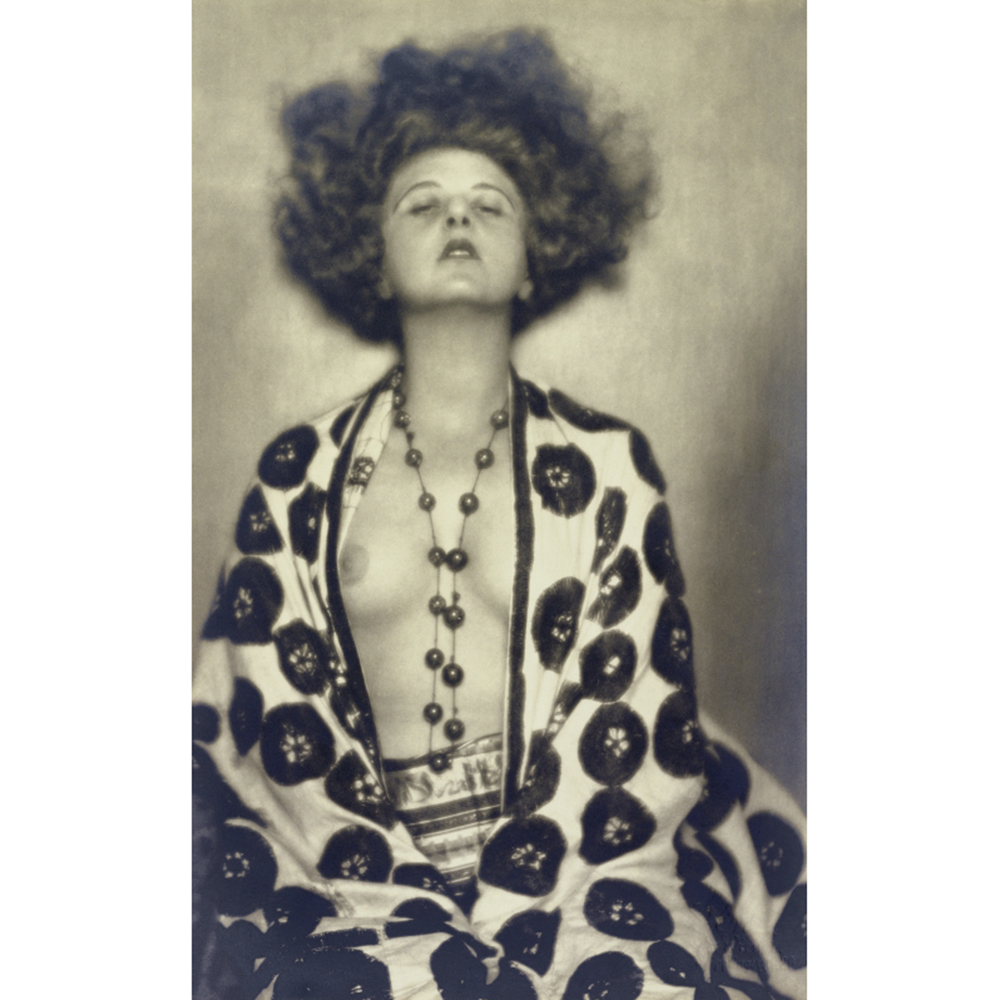
Elsie Altmann
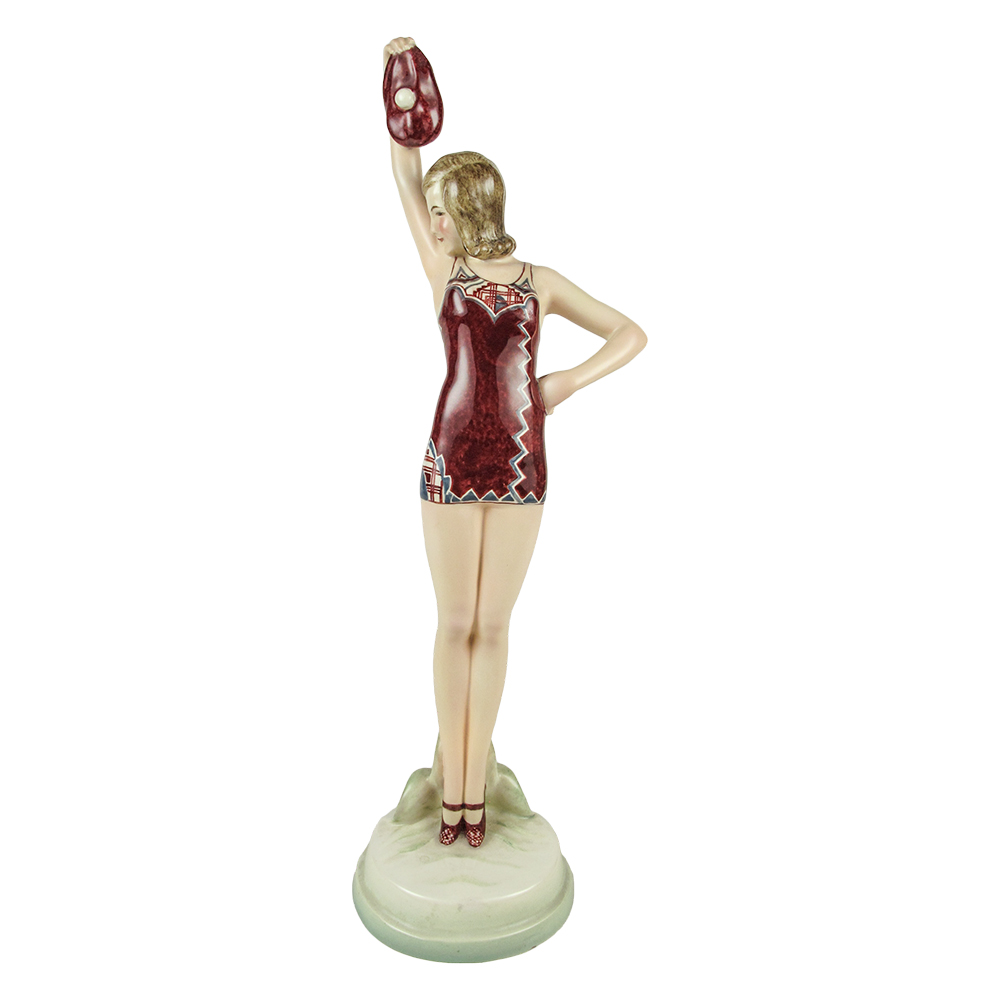
Goldscheider Cabaret Dancer
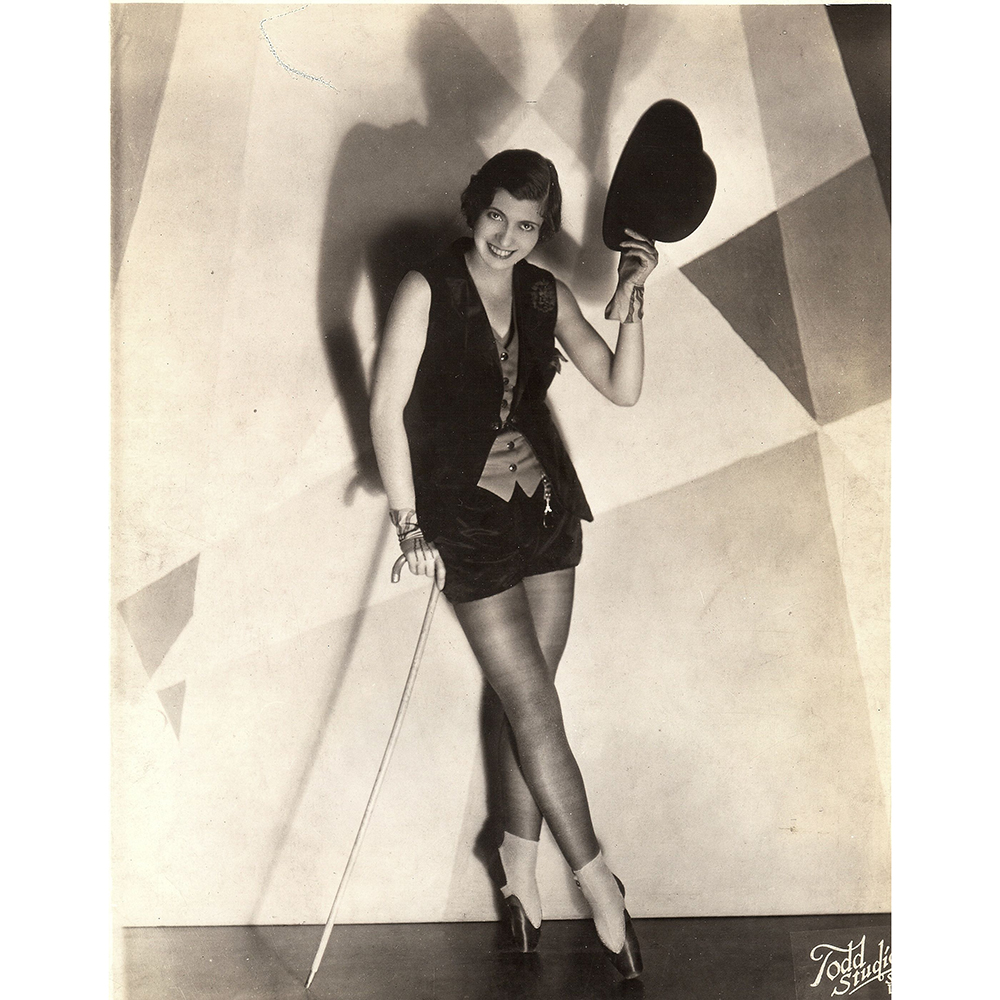
Cabaret Dancer with Cane
Berlin
The period of social and cultural upheaval that characterized Weimar Germany after the bloodbath of World War 1 created a nightclub boom in Berlin during the roaring 1920s. In Germany, women were granted the vote in 1918 and the ‘New Women’ frequented risqué bars and nightclubs. The relaxation of censorship led to a flourishing cabaret subculture, which was brilliantly conveyed by the expressionist artist Walter Schnackenberg. His posters and theatrical costumes for avant-garde dancers, such as Lena Amsel and Lo Hesse, inspired several porcelain figurines by Rosenthal.
In 1925, the propaganda film Ways to Strength and Beauty, condemned the dissipated cabaret life-style and celebrated all forms of dance and exercise to revitalize war-torn Germany. Niddy Impekoven, whose Captured Bird dance was immortalized by Goldscheider, was a consultant and dancer in the film. Many of the dance styles in the documentary were adapted for the stage and created a pulsating energy in the nightclubs combined with popular dance crazes, such as the Charleston, and the hypnotic rhythms of American jazz. Anita Berber’s sensational Dance of Vice, Horror and Ecstasy epitomized expressionist dance, modern decadence and debauchery. Crowds flocked to watch her at the Weisse Maus (White Mouse) where the erotic frisson was enhanced by the audience wearing masks.
The image of dancing on a volcano has been used to describe the frenetic lifestyle of the roaring 1920s. The carefree lifestyle was impacted by the Wall Street crash of 1929 and the effects of the Great Depression. In Germany, the rise of the Nazi party put an end to the uninhibited cult of distraction of cabaret life which was considered depraved and degenerate.
Read more about the stars portrayed by Goldscheider
The Golden Years of Goldscheider
Read more about Schnackenberg’s designs and Rosenthal porcelain
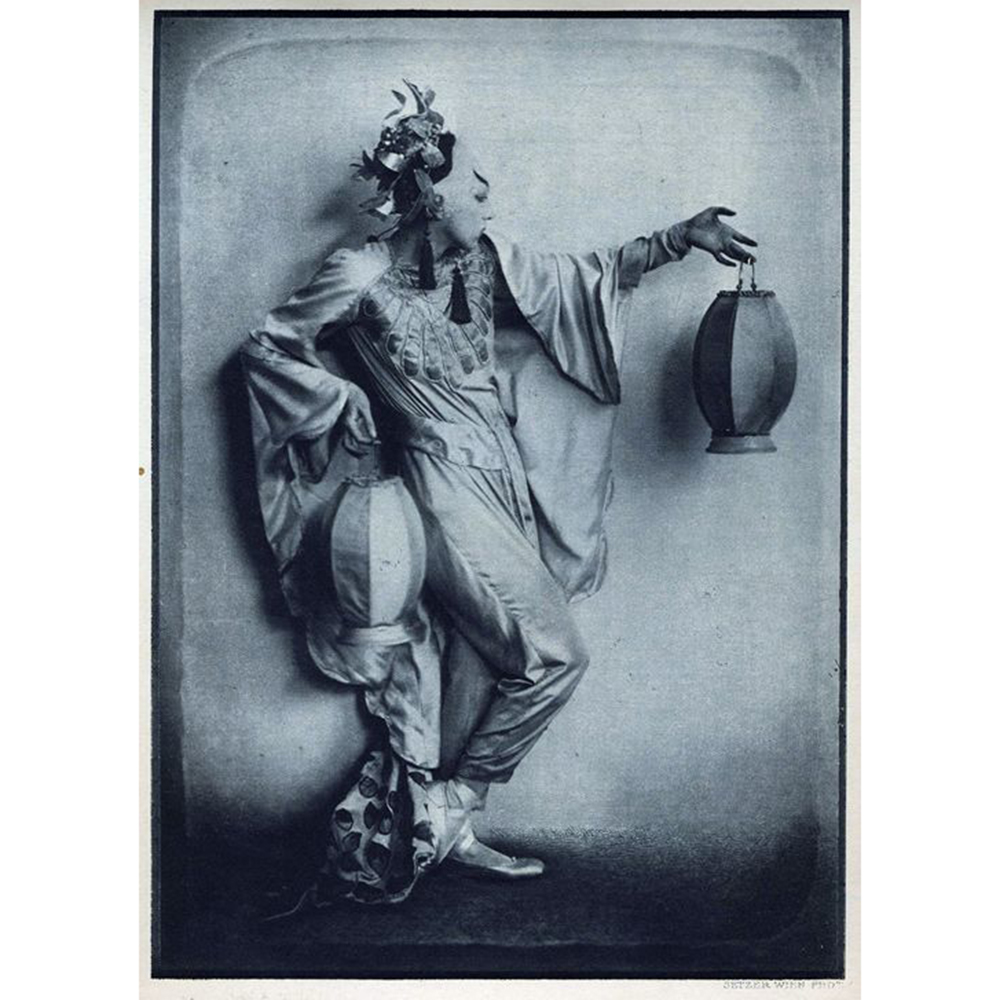
Schnackenberg Costume
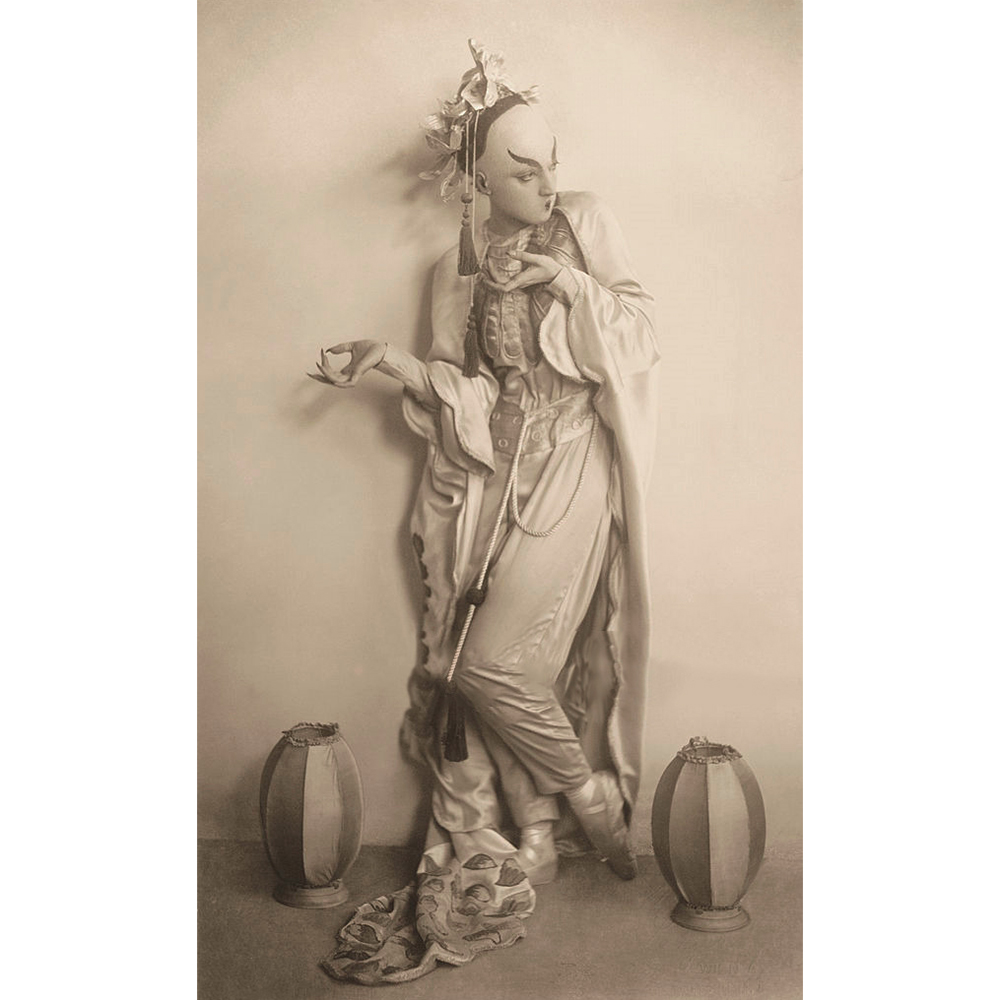
Lo Hesse Tschaikiun Schnackenberg Costume
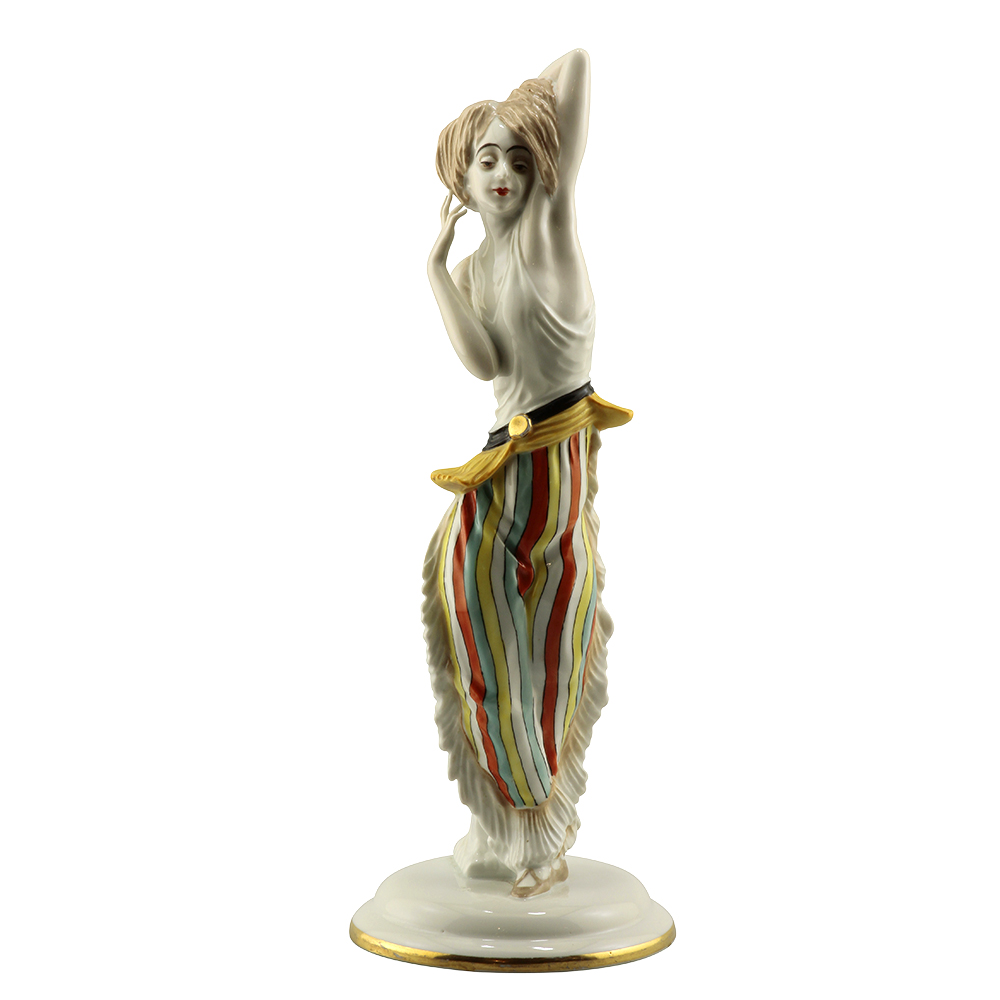
Lo Hesse Humoresque
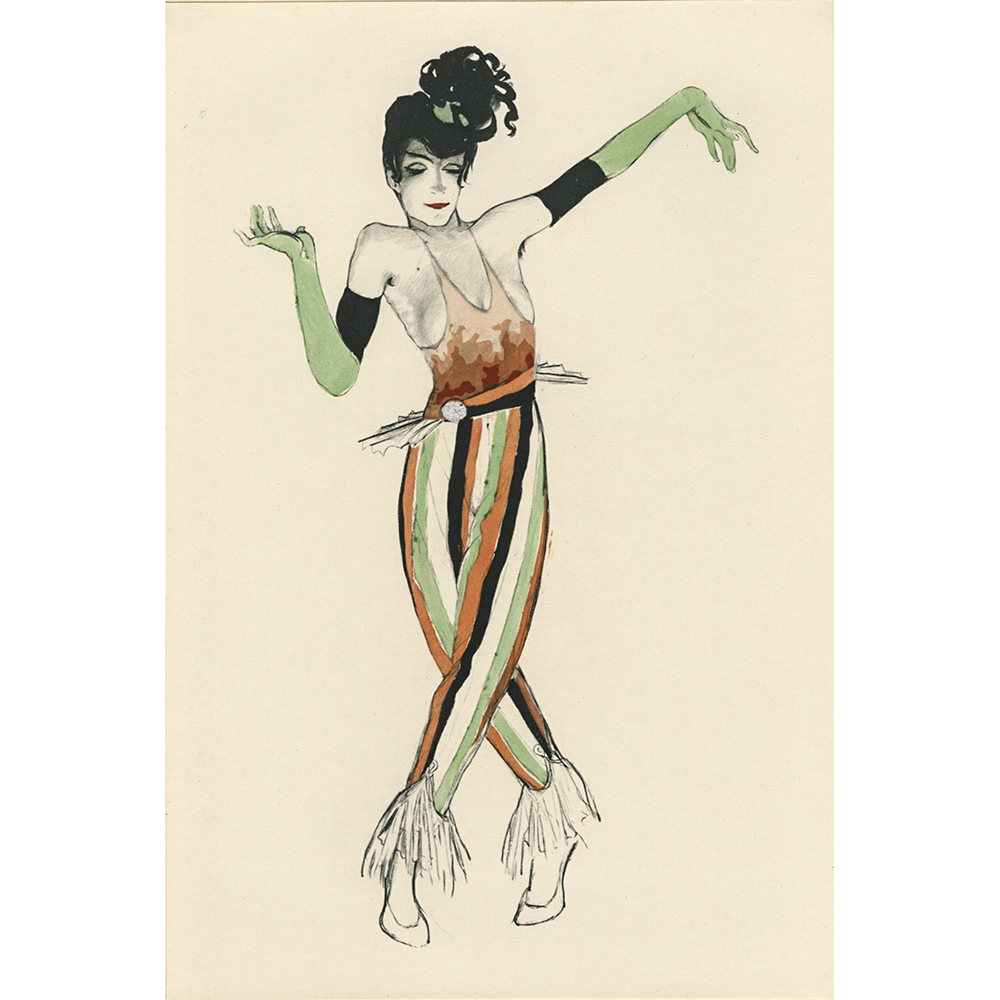
Schnackenberg Costume Design for Lo Hesse
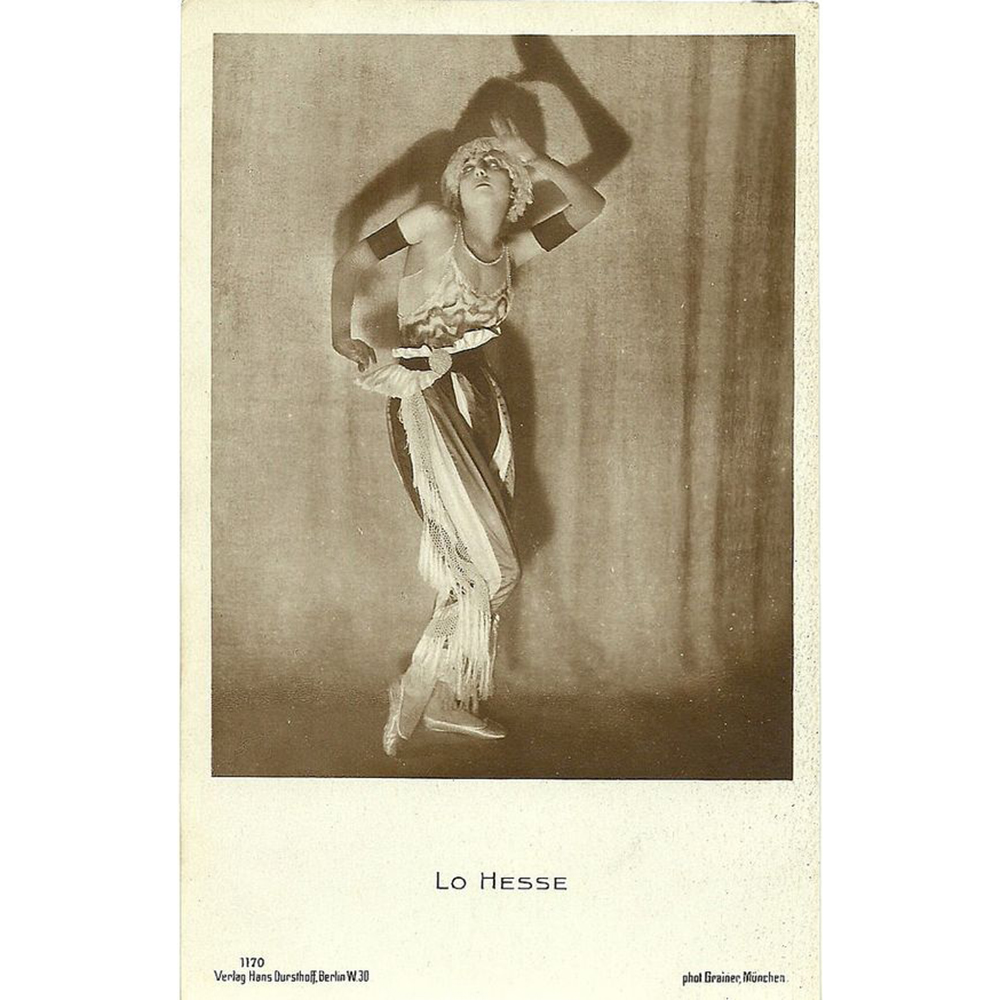
Lo Hesse dancing Humoresque
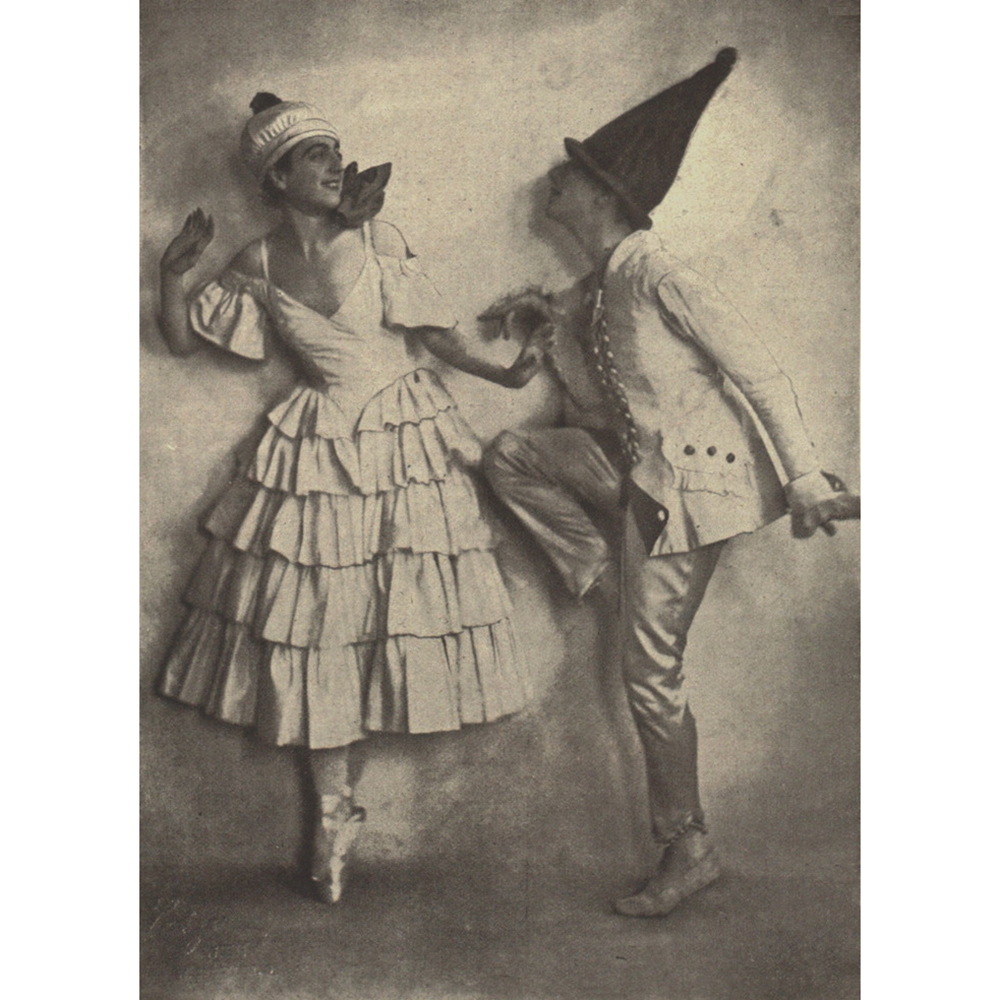
Joachim von Seewitz and Lo Hesse
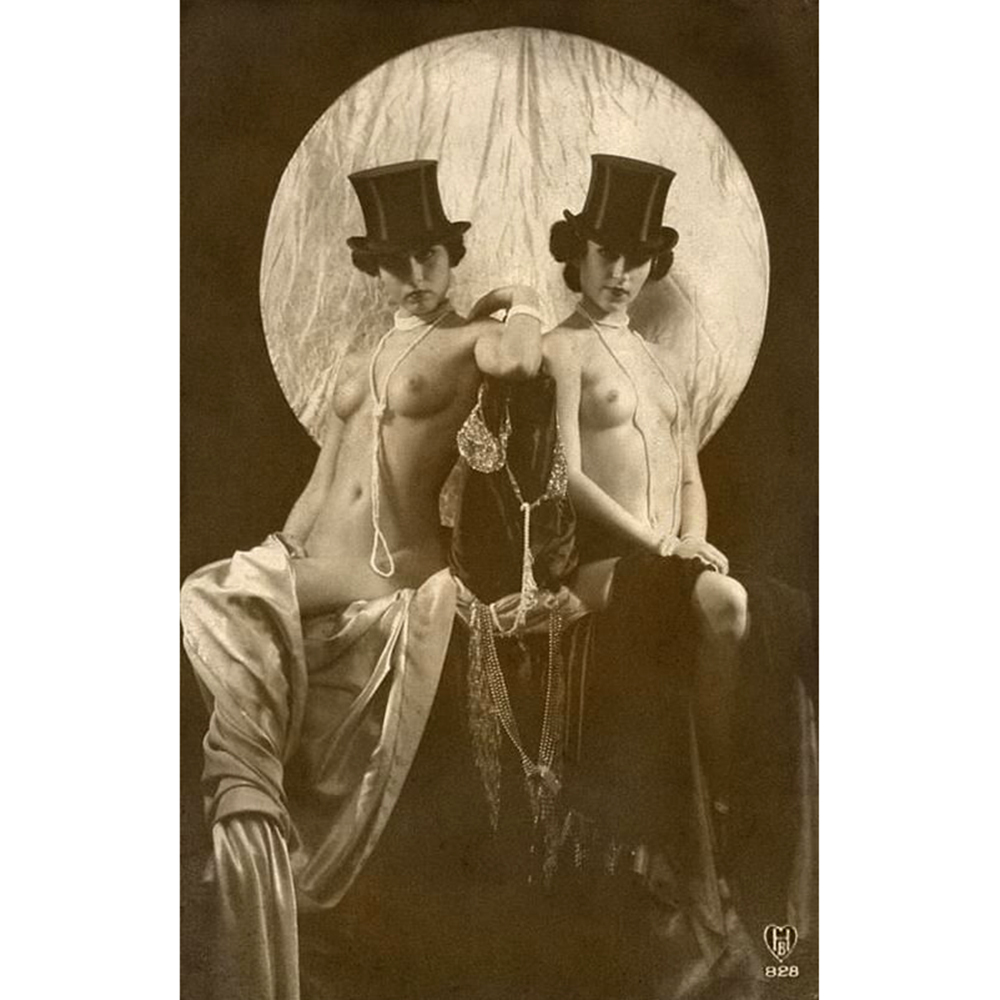
Burlesque 1920s
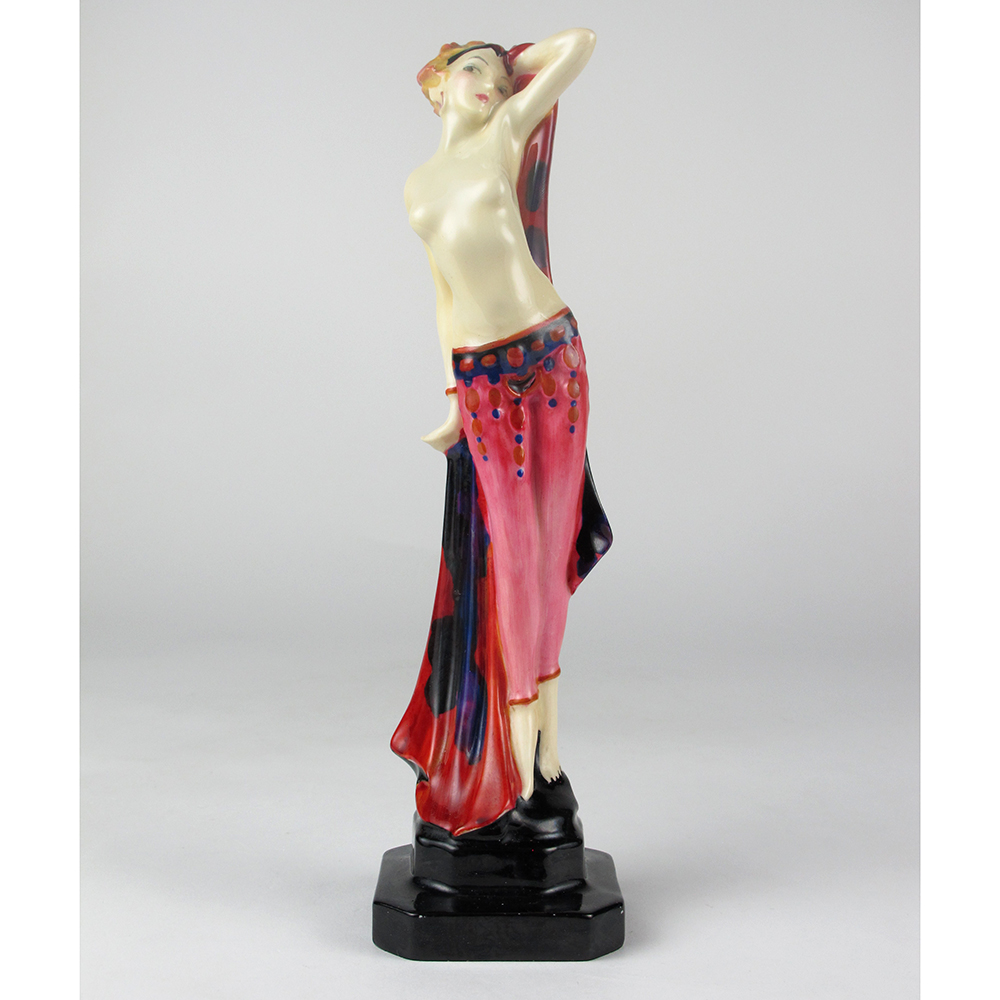
Royal Doulton Carnival
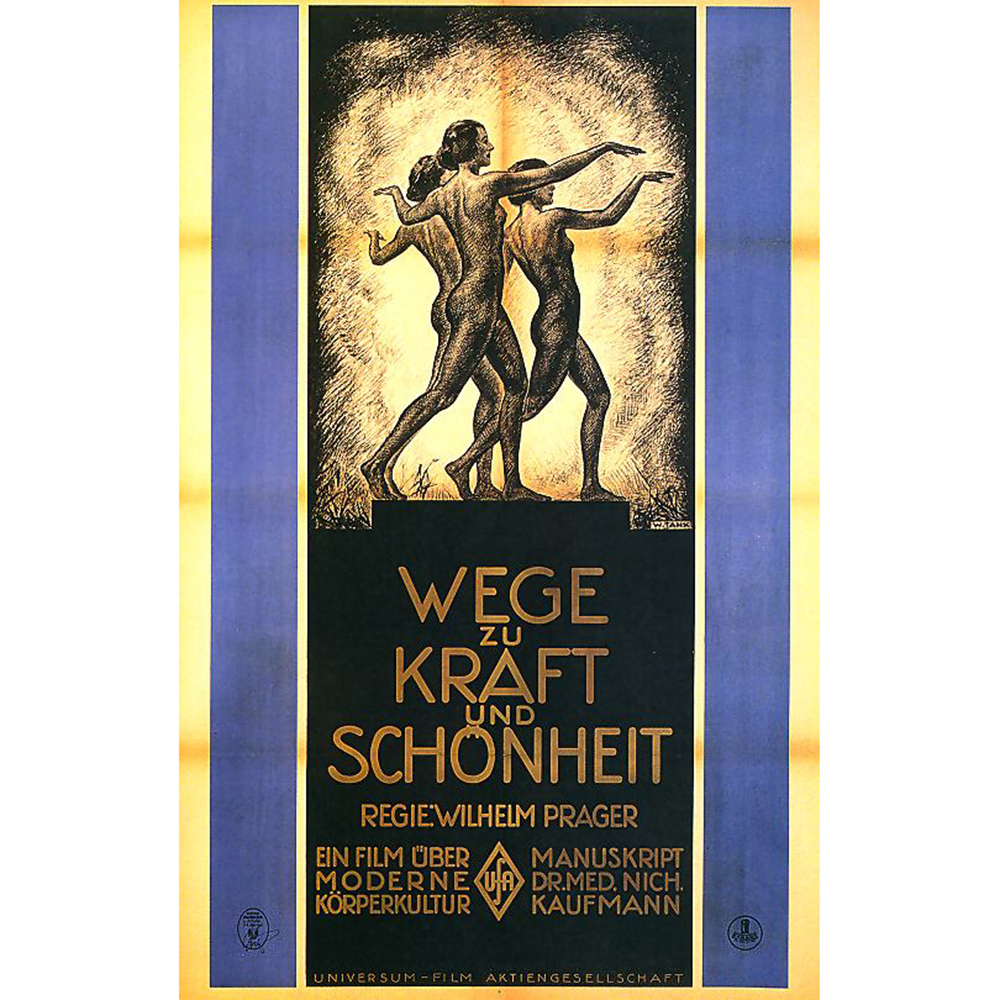
Ways to Strength and Beauty Movie Poster
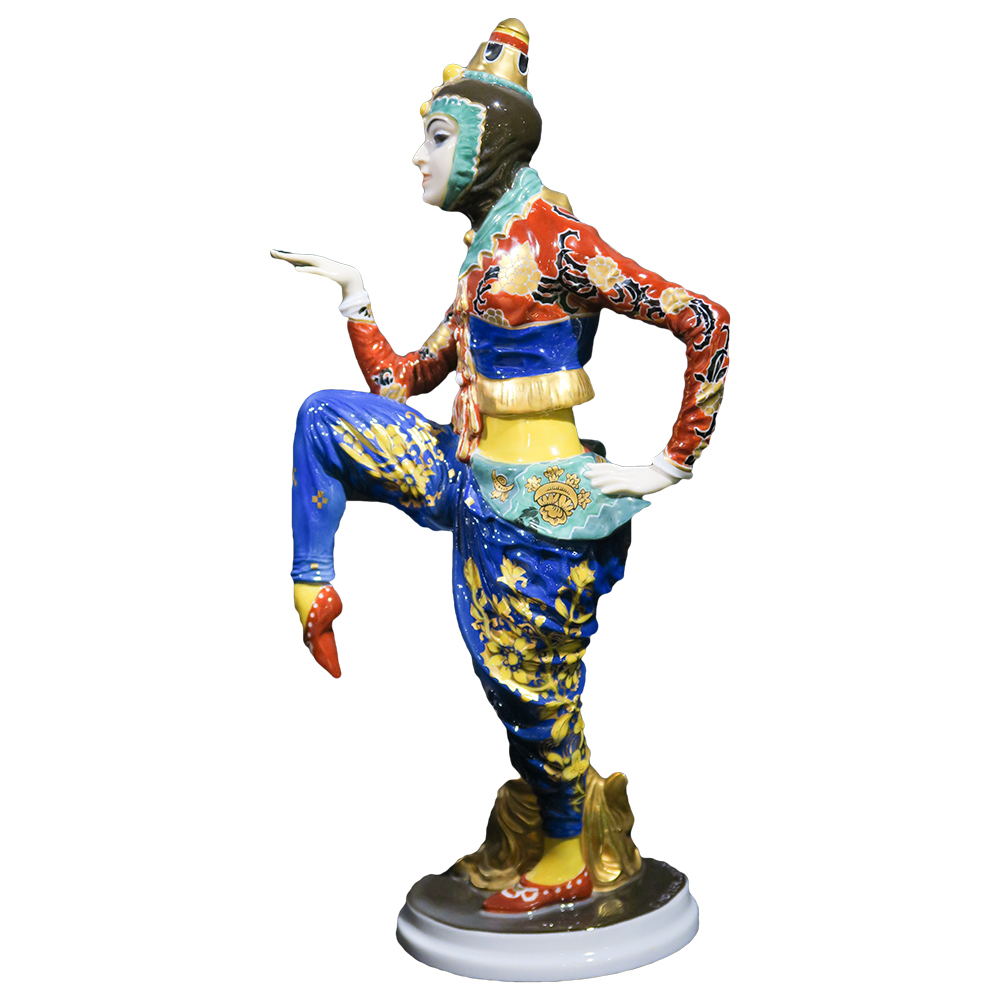
Rosenthal Anita Berber as the Korean Dancer
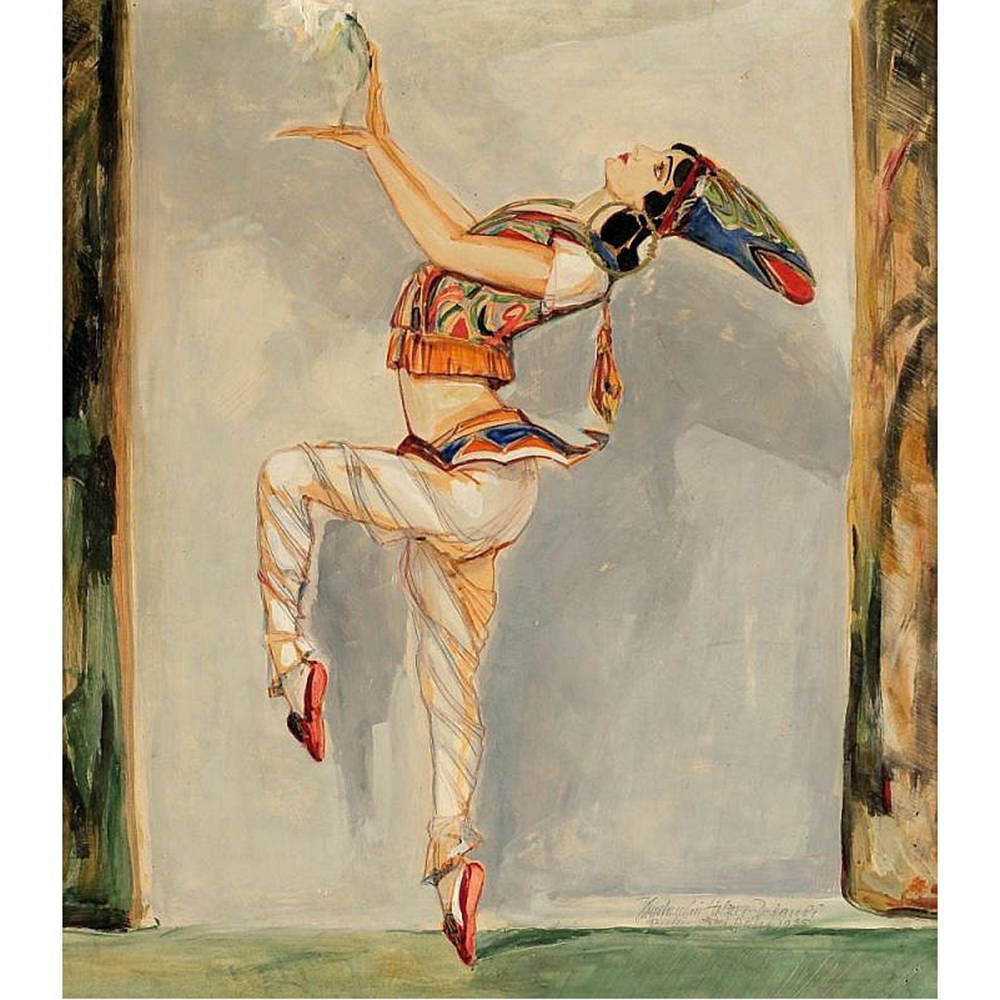
Anita Berber as the Korean Dancer Painting by C. Holzer
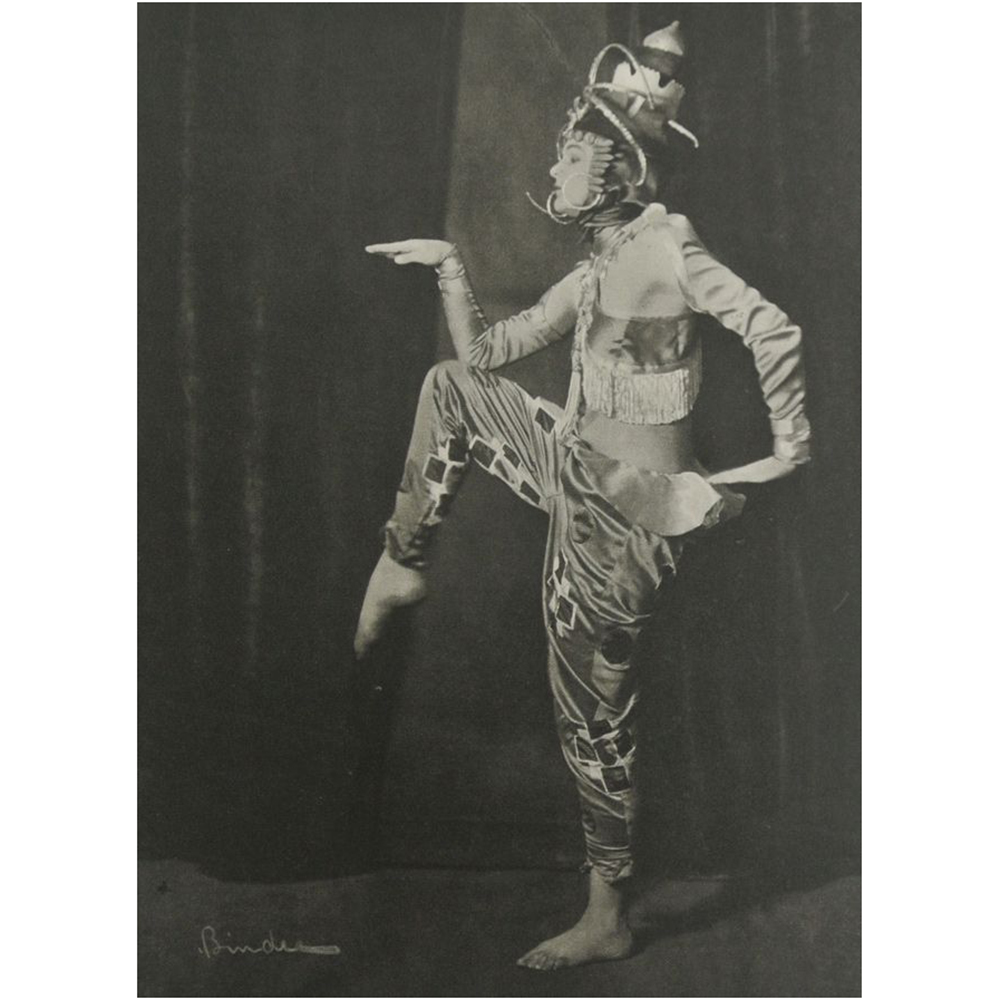
Anita Berber as the Korean Dancer, Schnackenberg Costume
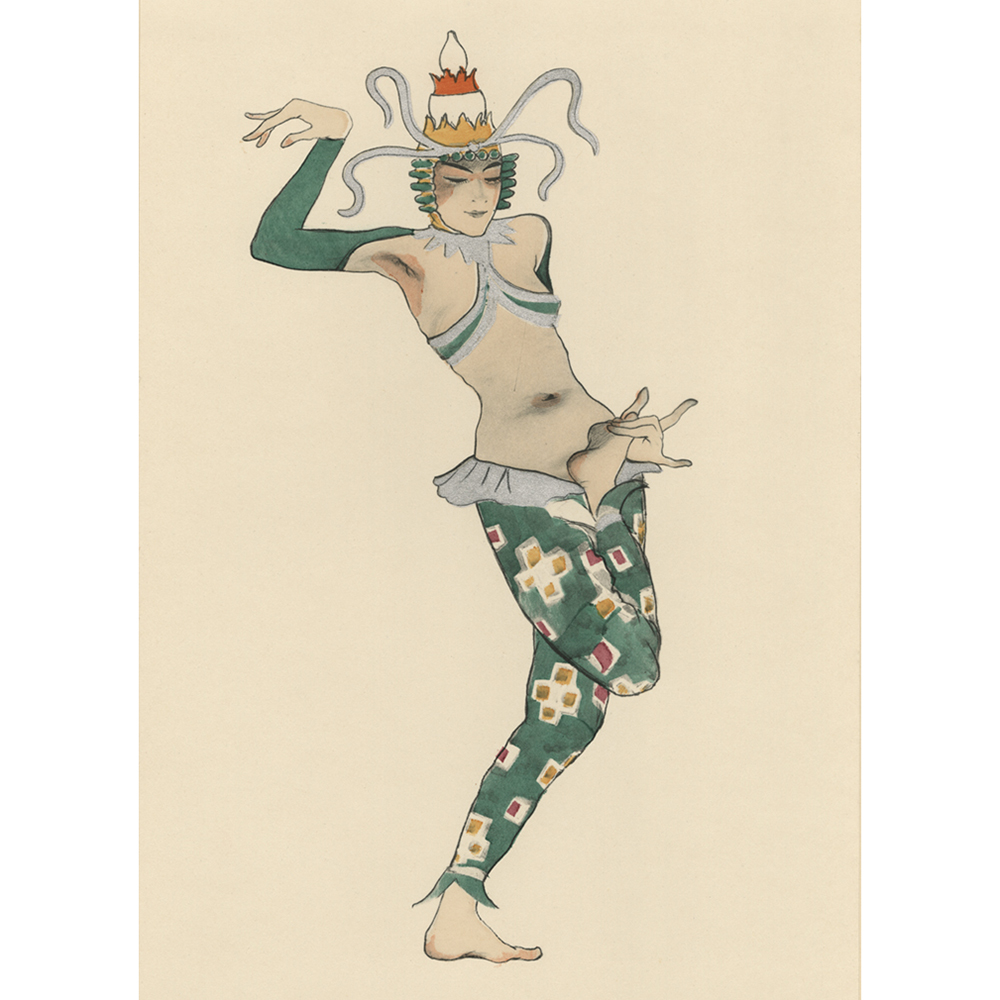
Schnackenberg costume design for Bingha
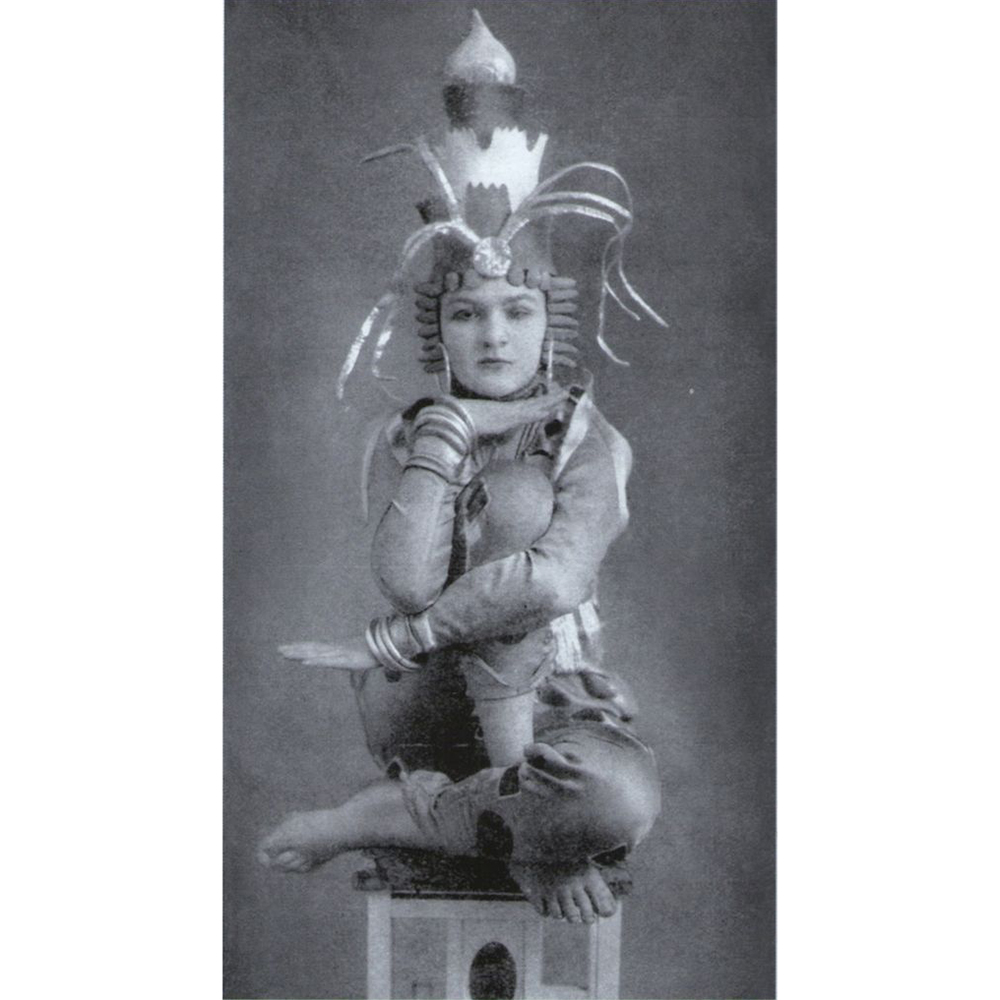
Anita Berber in Bingha
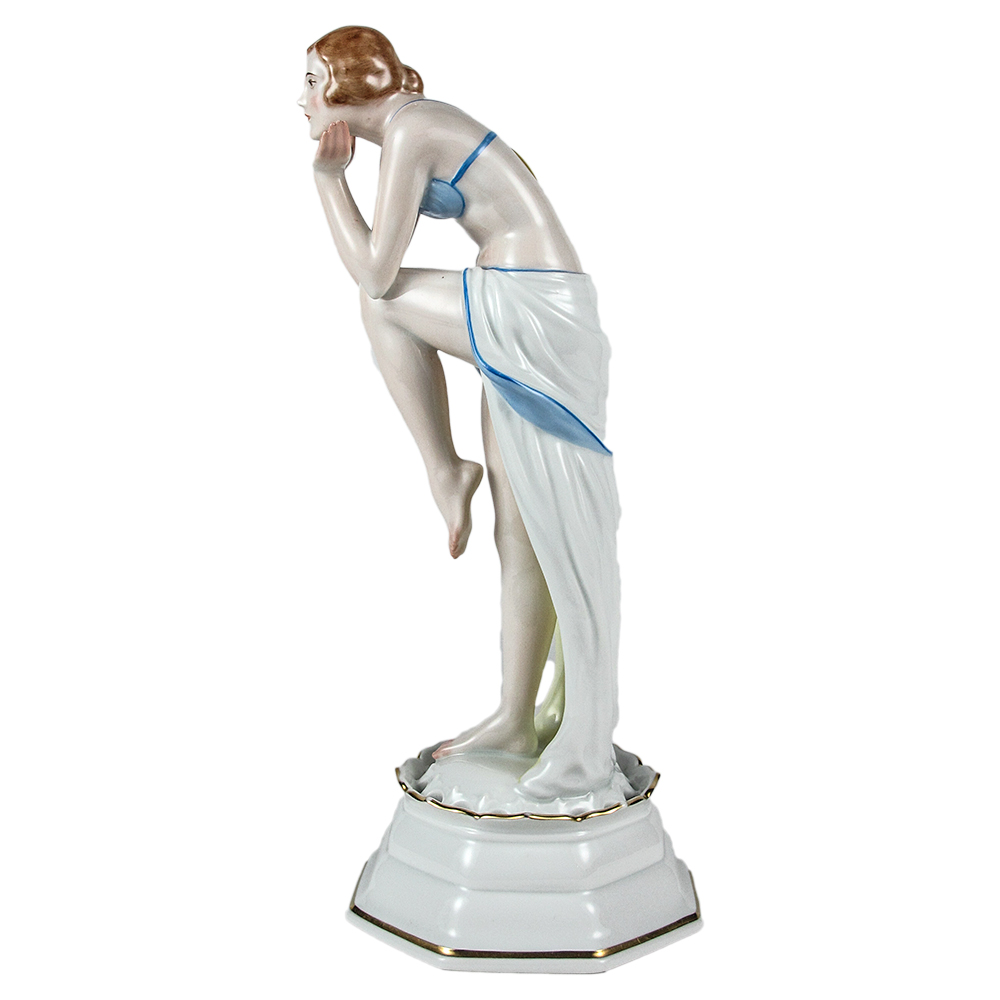
Rosenthal Anita Berber
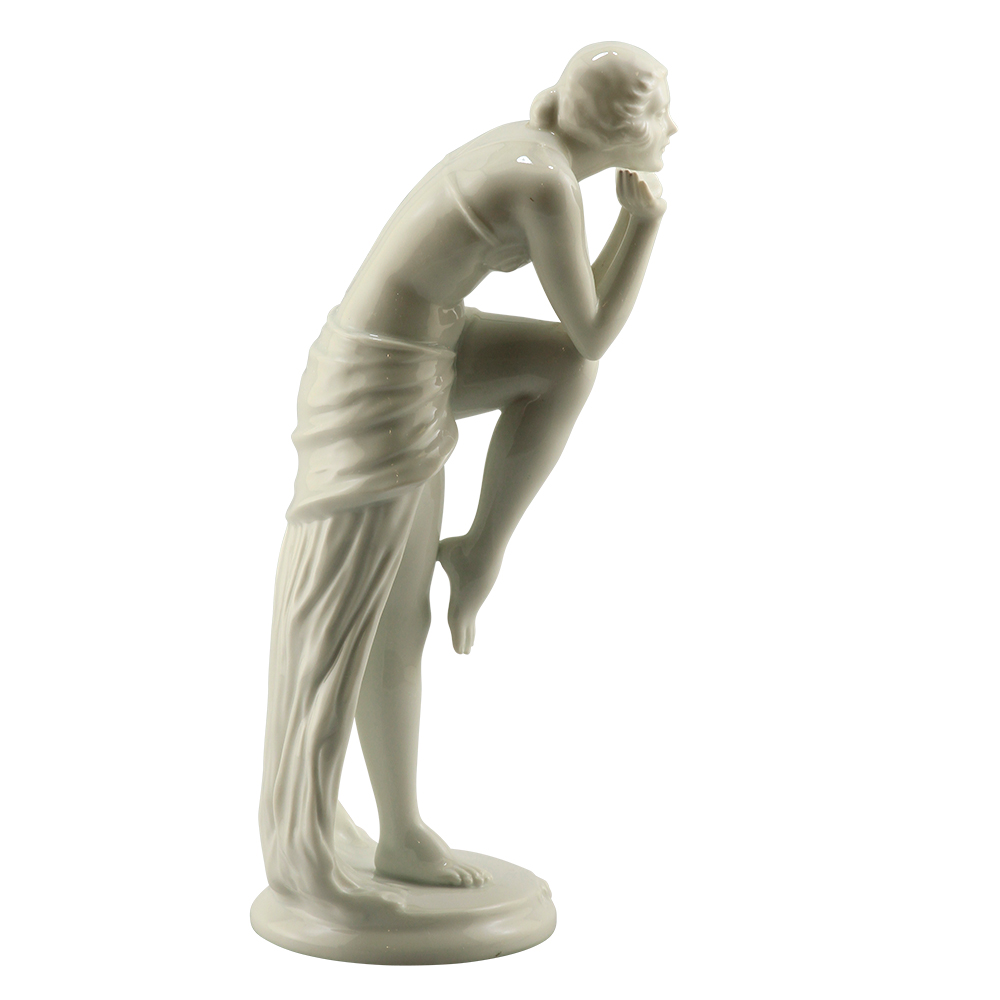
Anita Berber
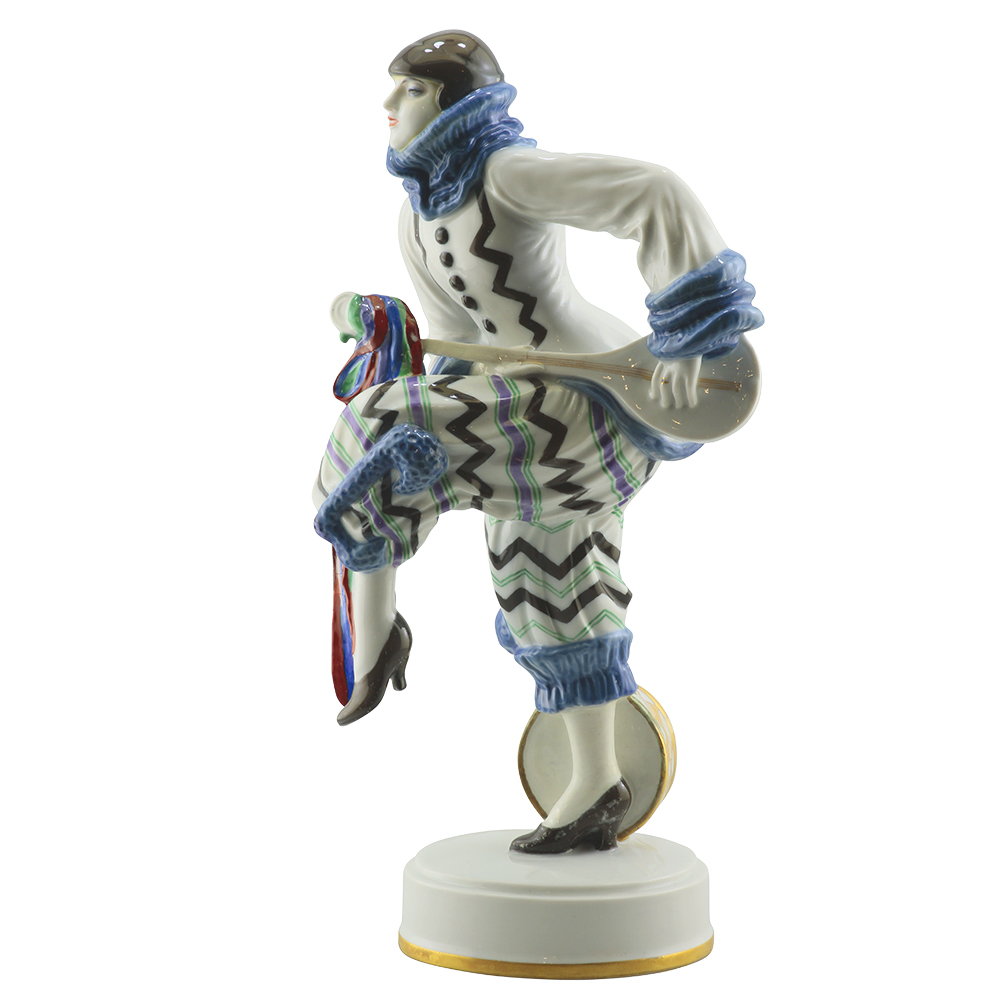
Rosenthal Lena Amsel
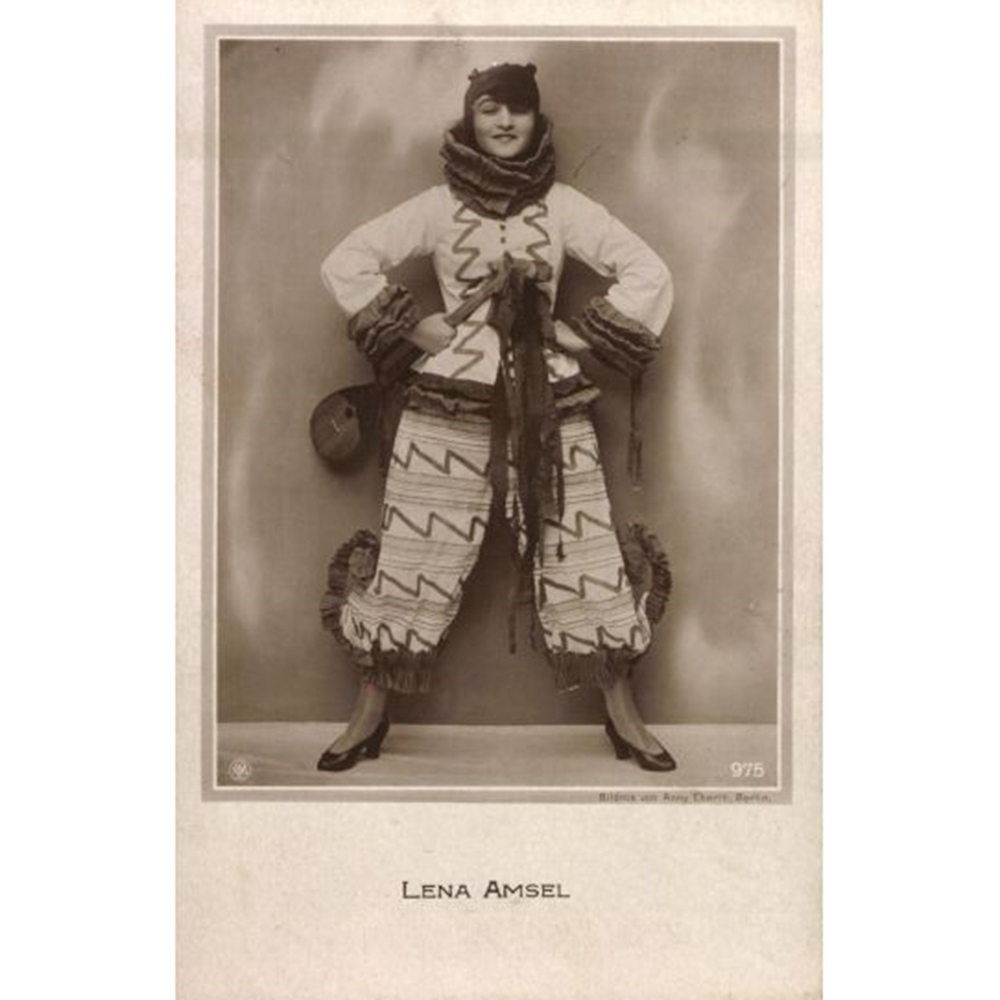
Lena Amsel Marcha Alegre
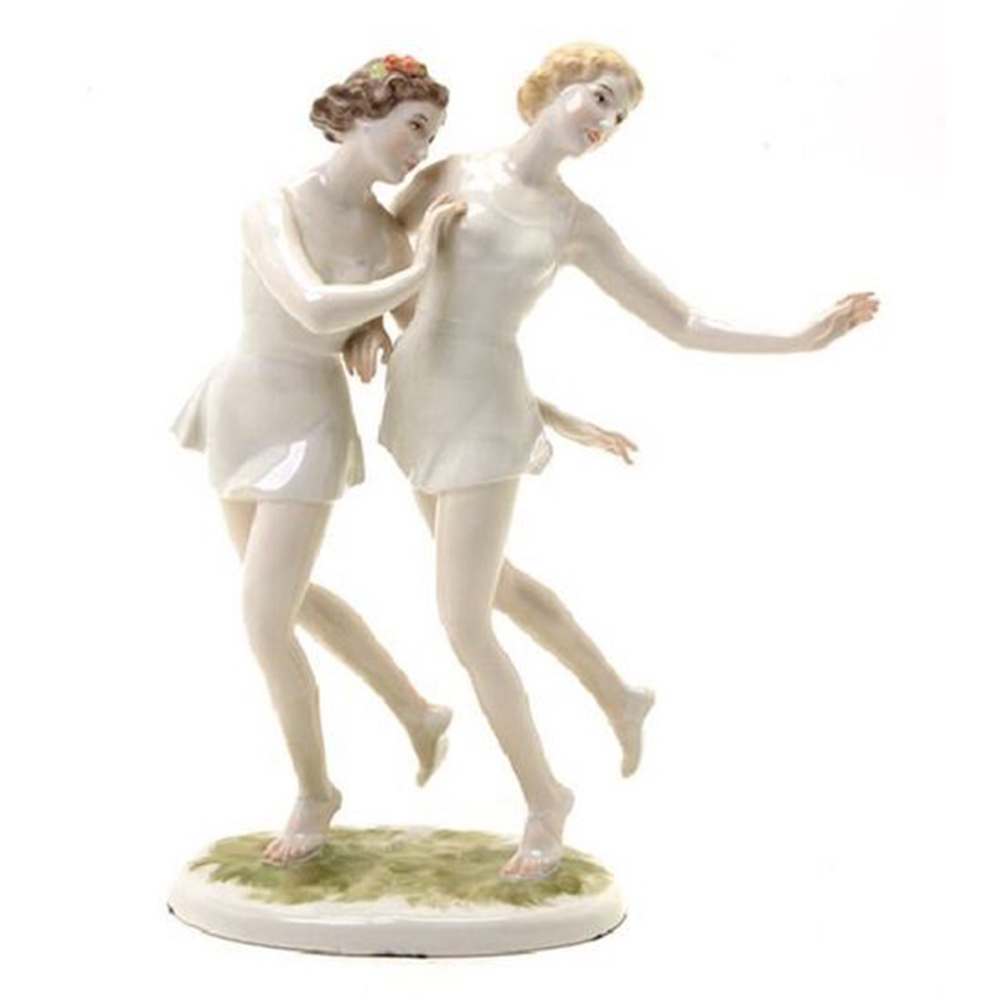
Rosenthal Dancers
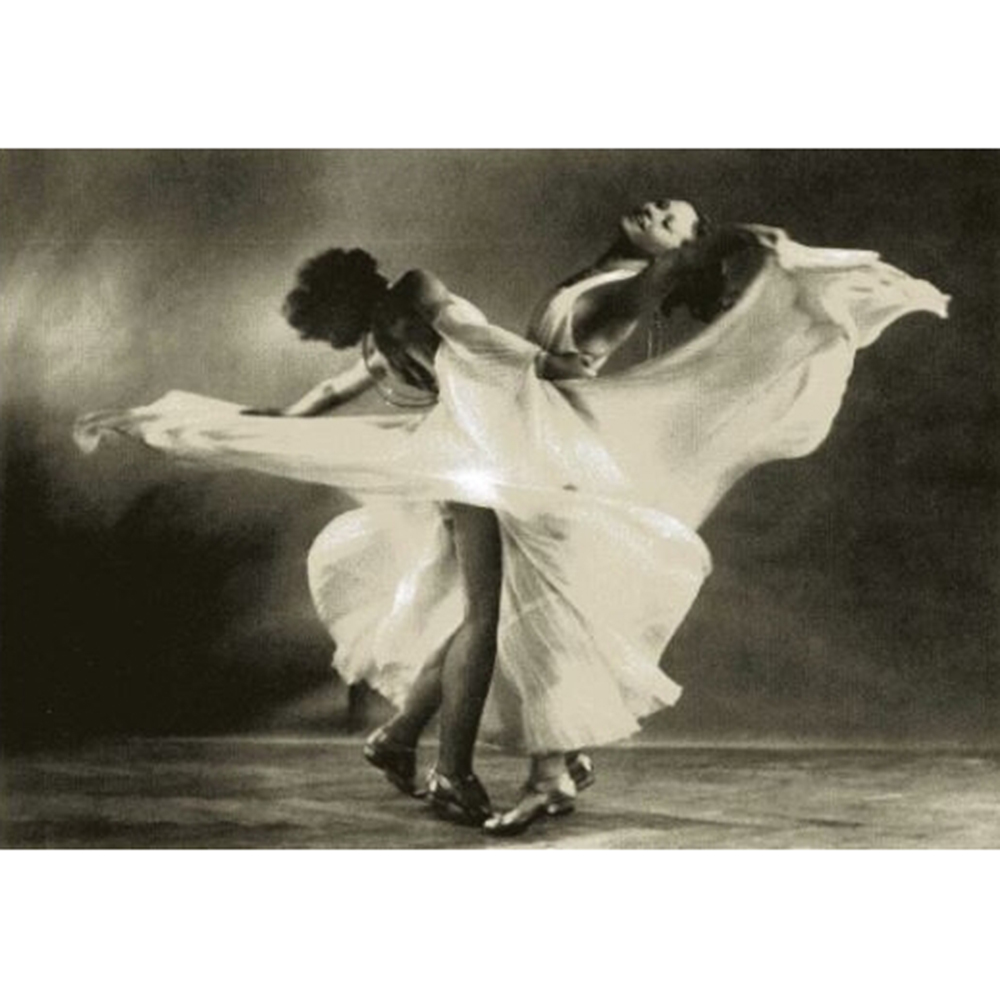
Hedi & Margot Hopfner
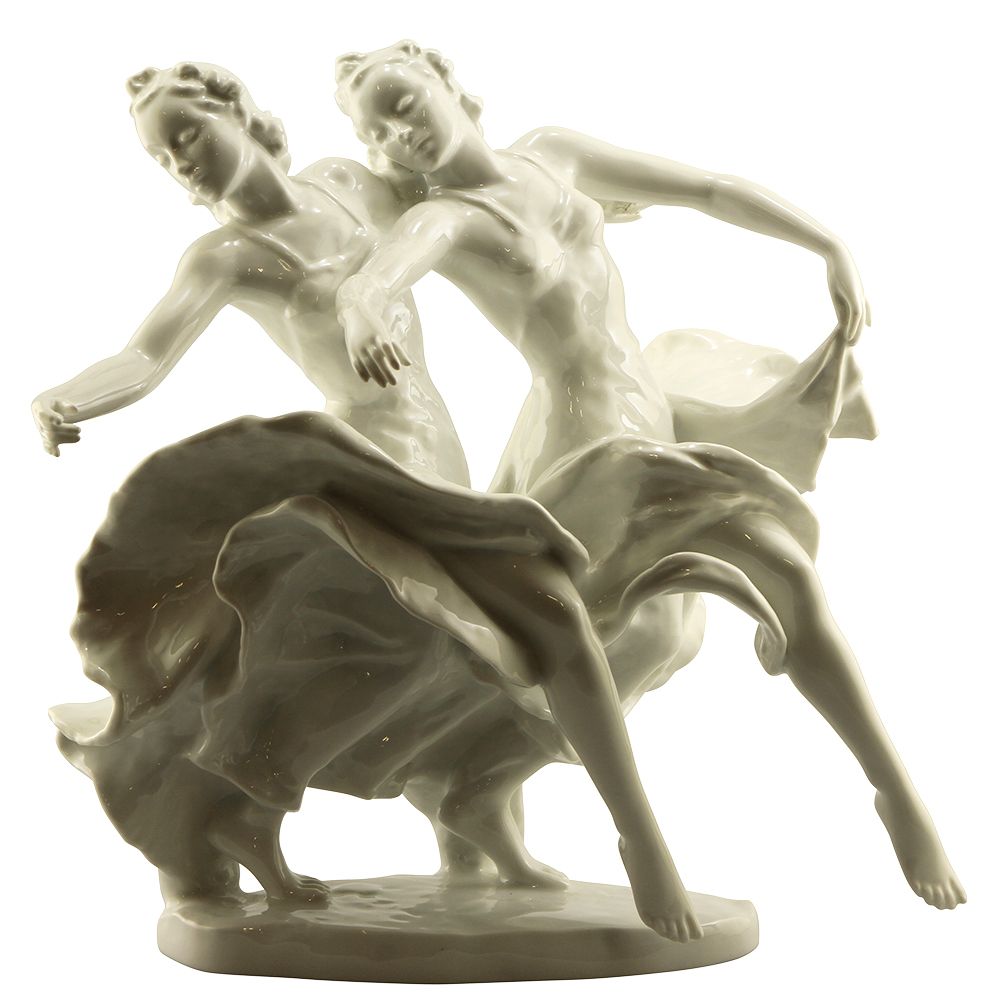
Rosenthal Hopfner Sisters by Gronau
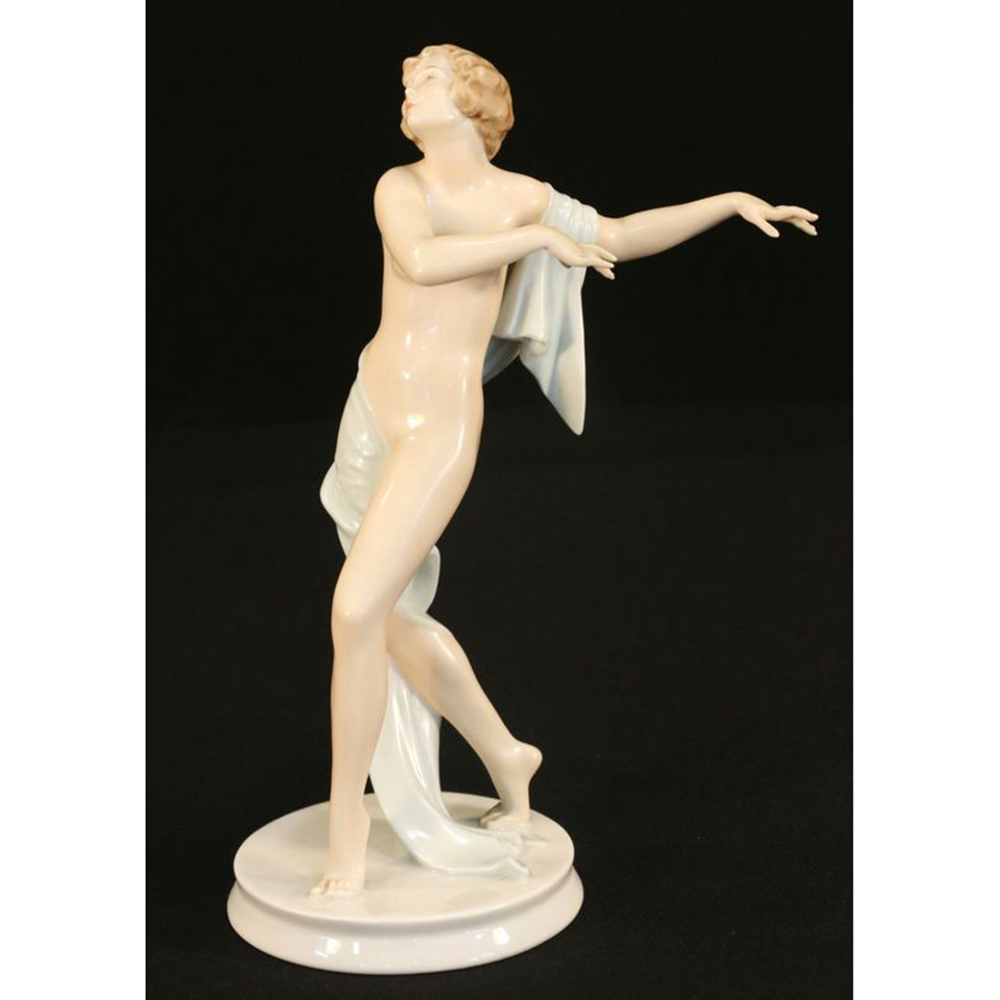
Rosenthal Scherzo
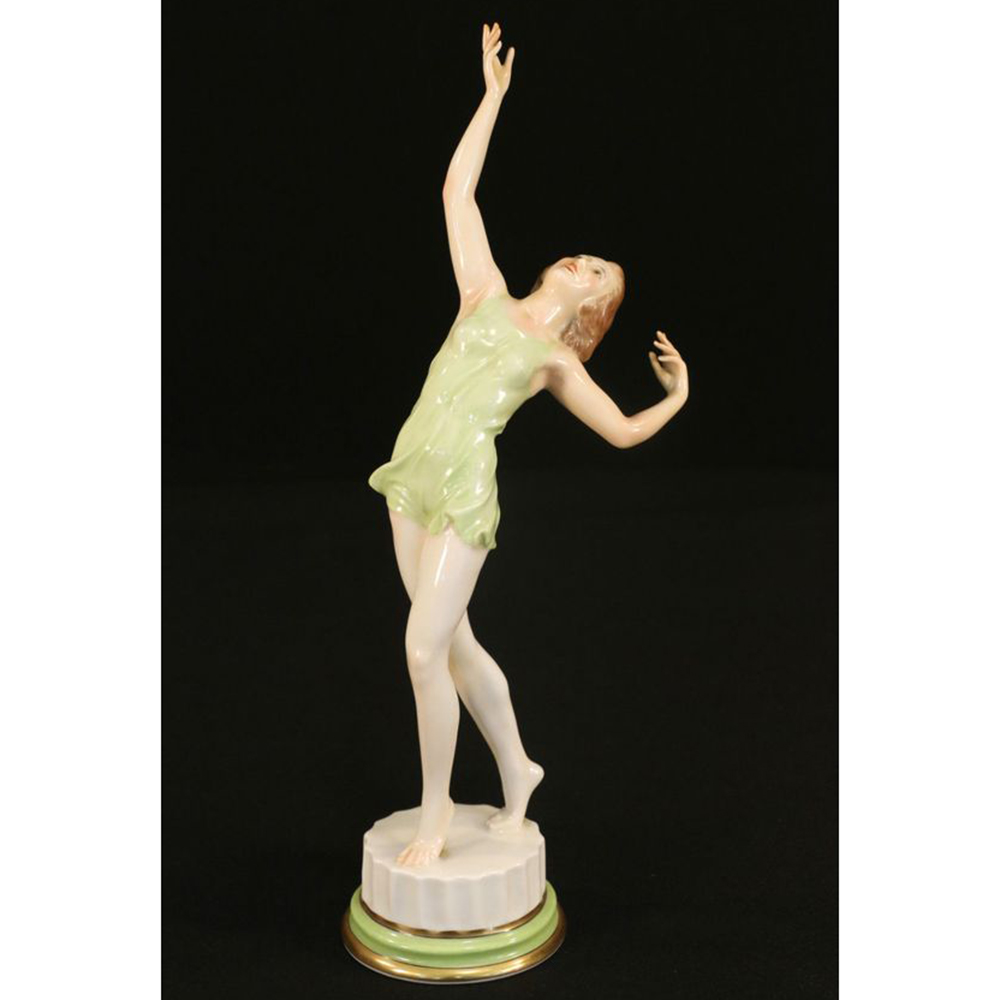
Rosenthal Dancer
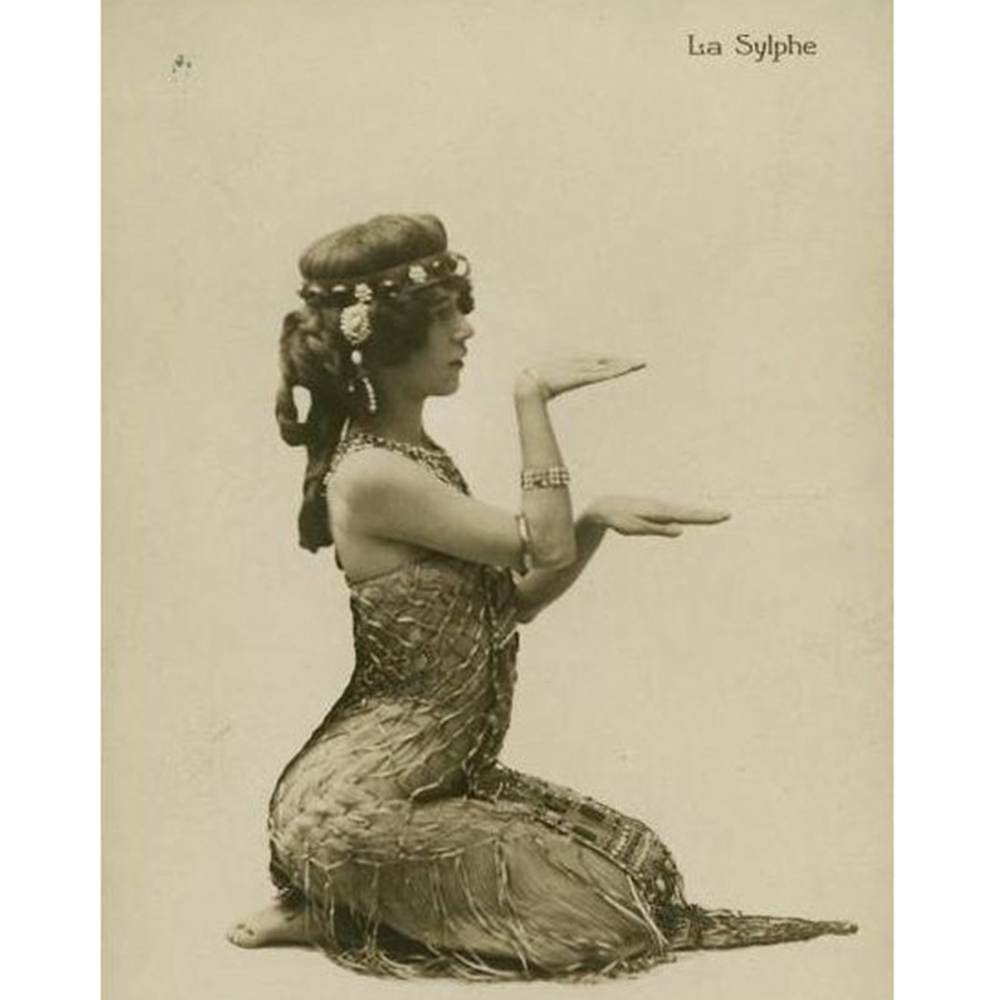
La Sylphe
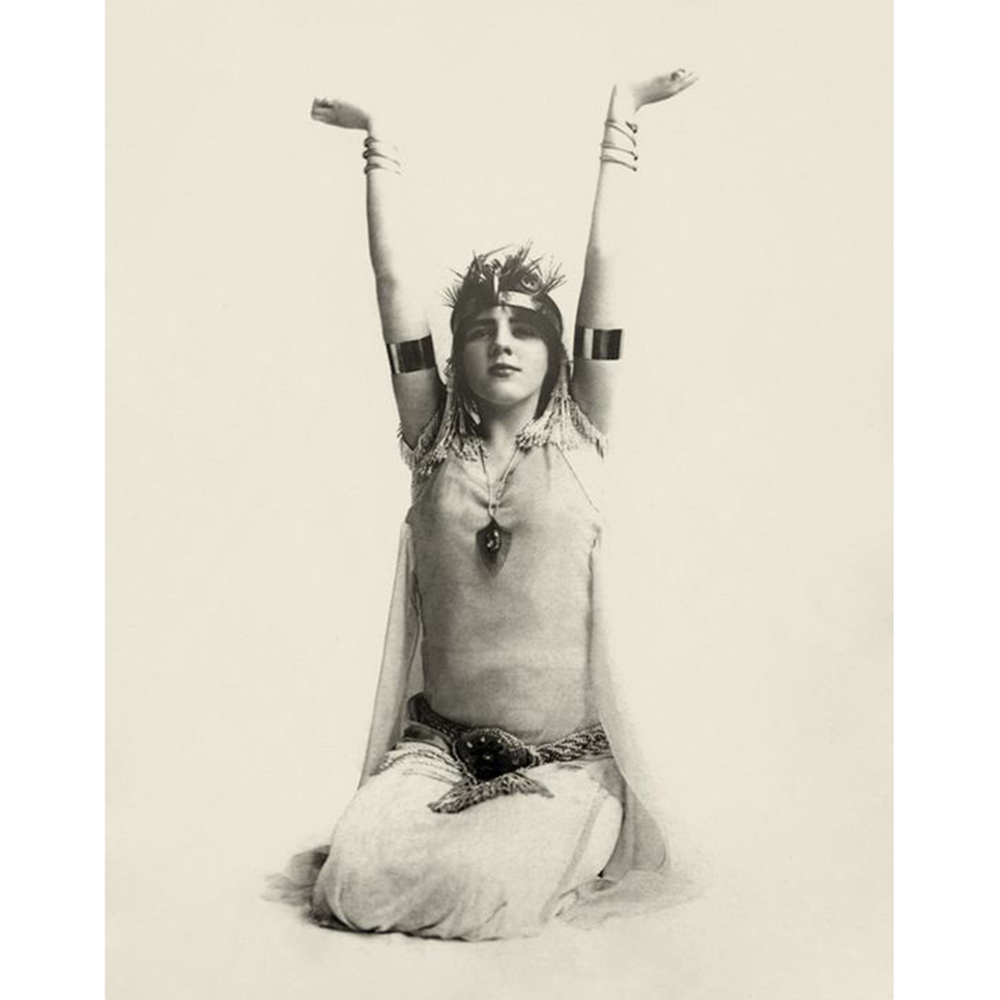
Evan Burrows
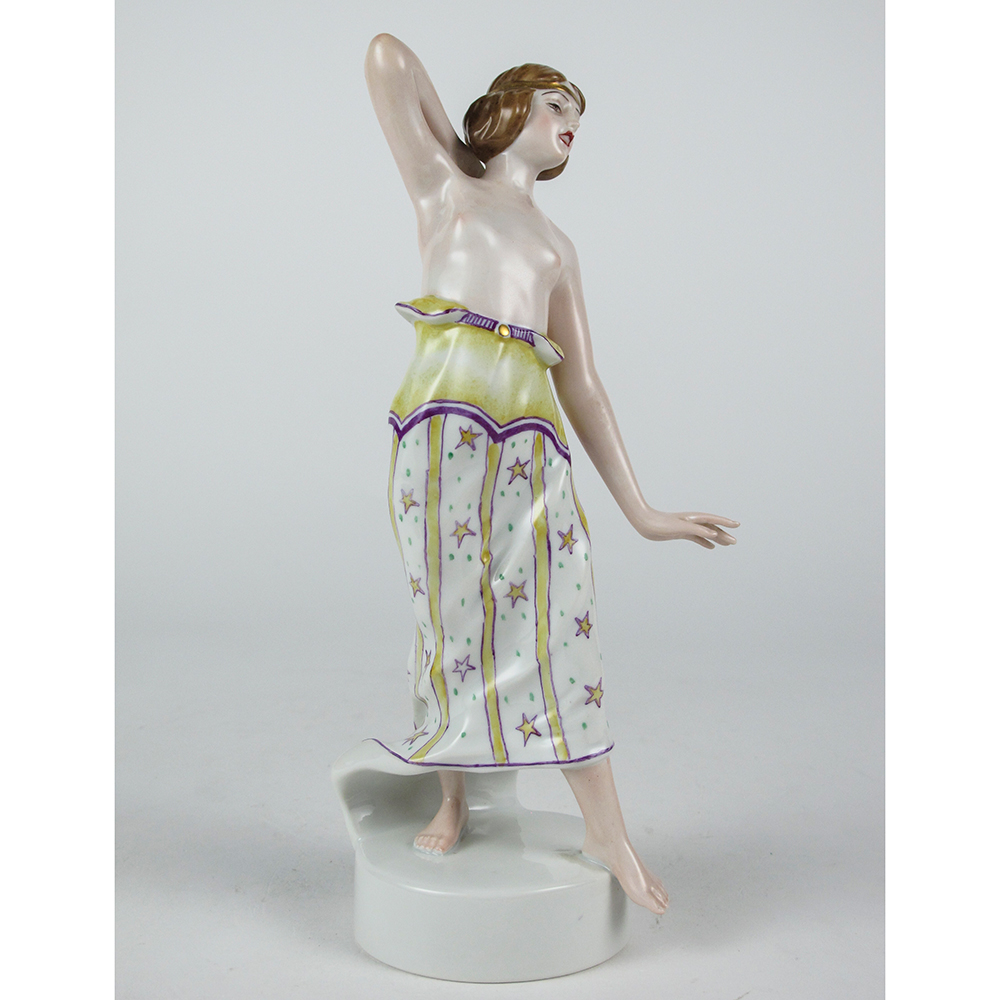
Rosenthal Ionian Dancer
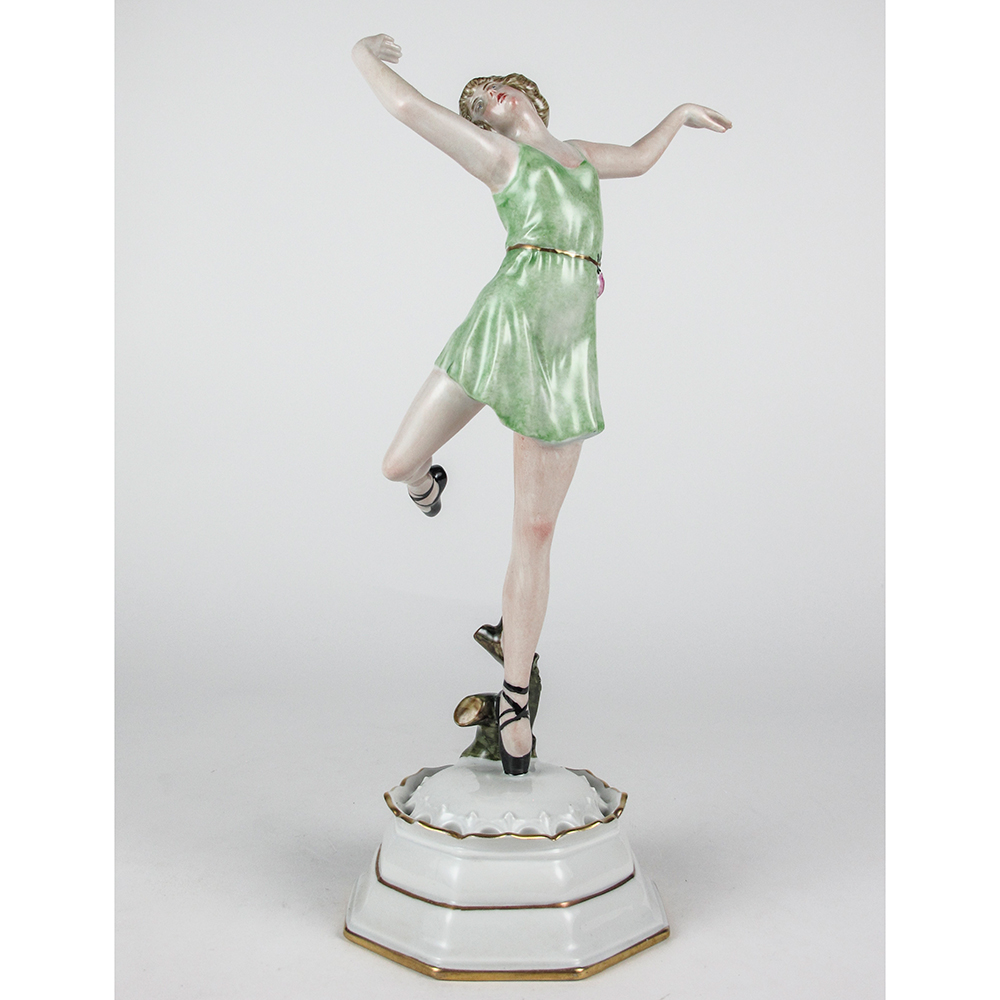
Rosenthal Spring Russian Dancer
